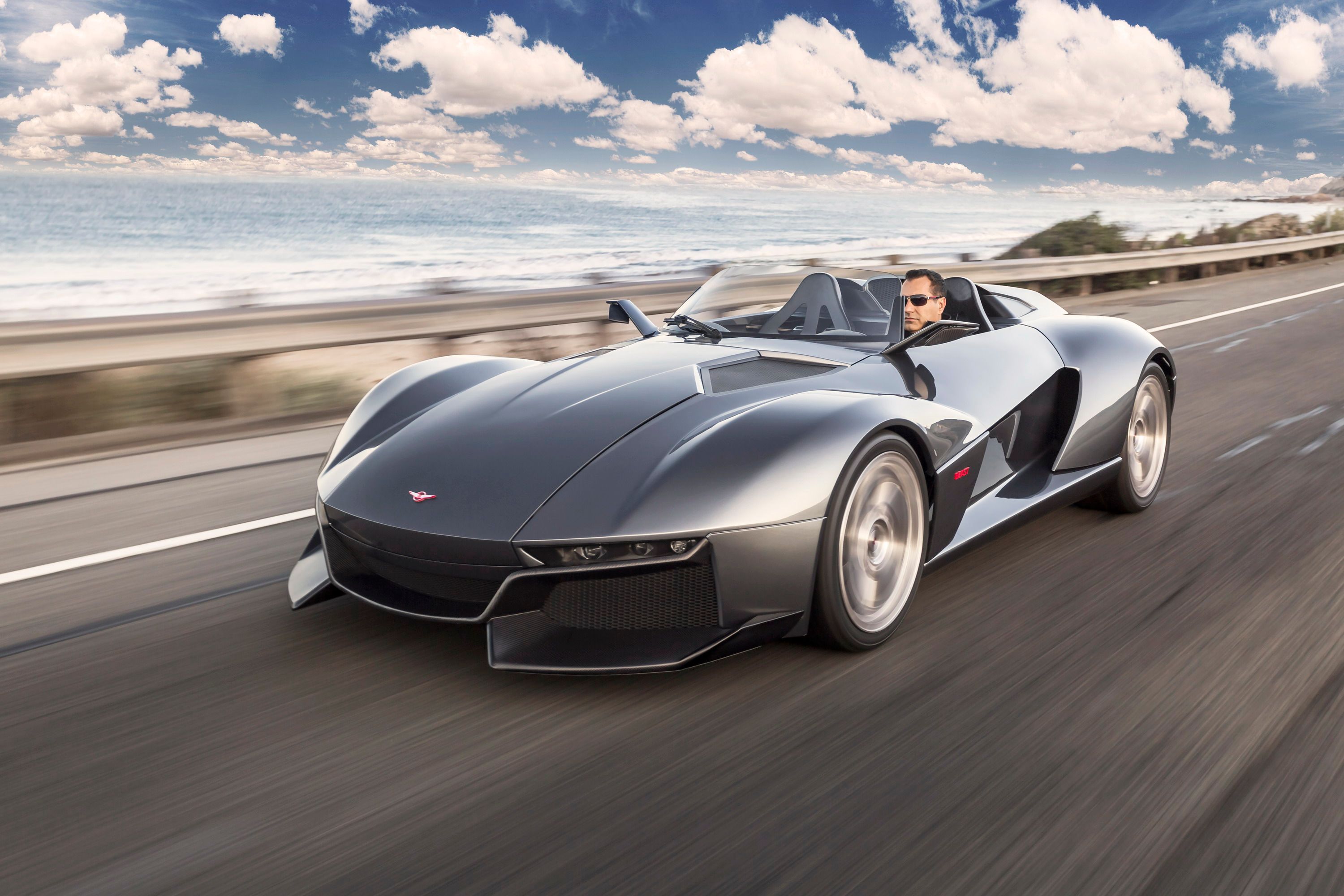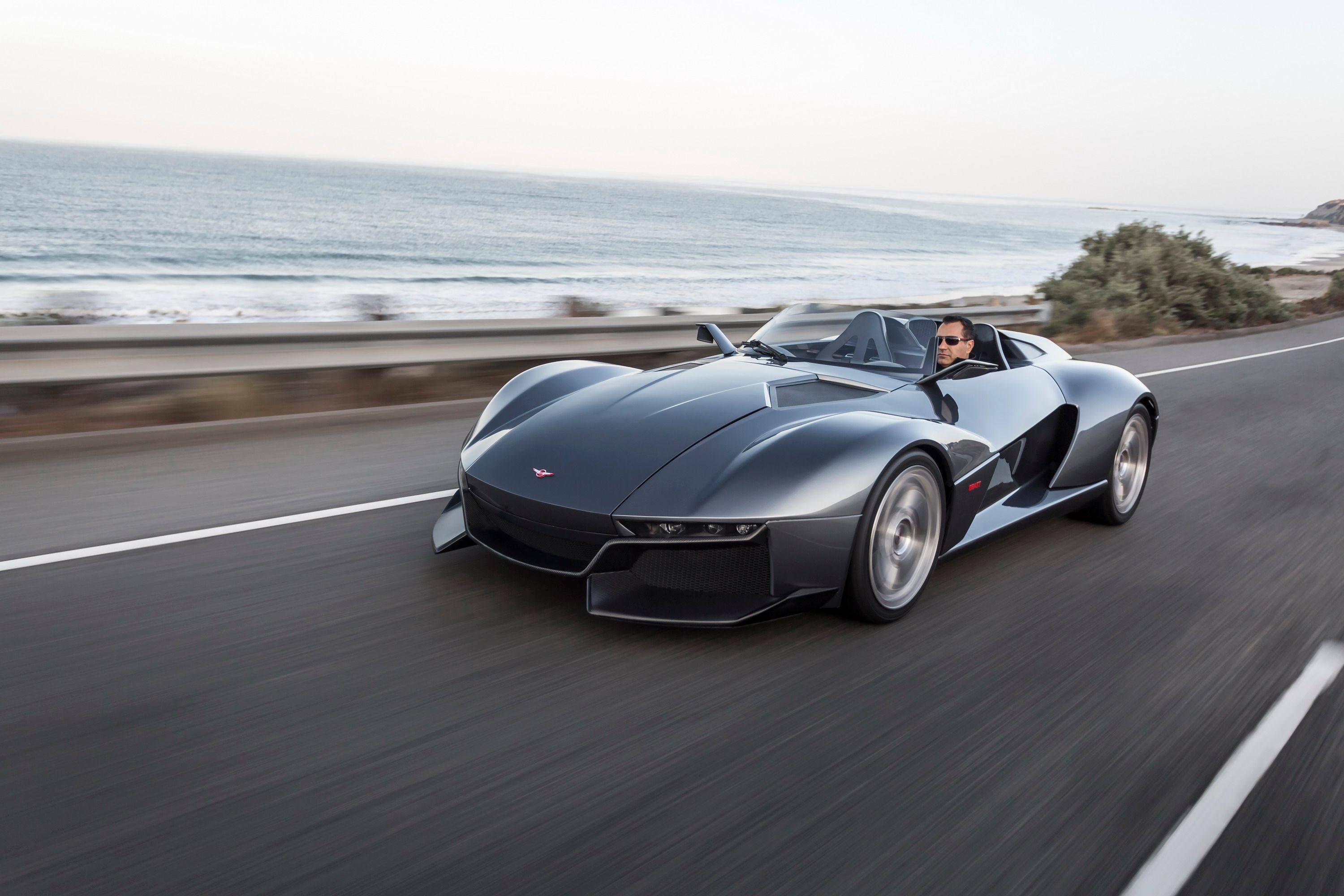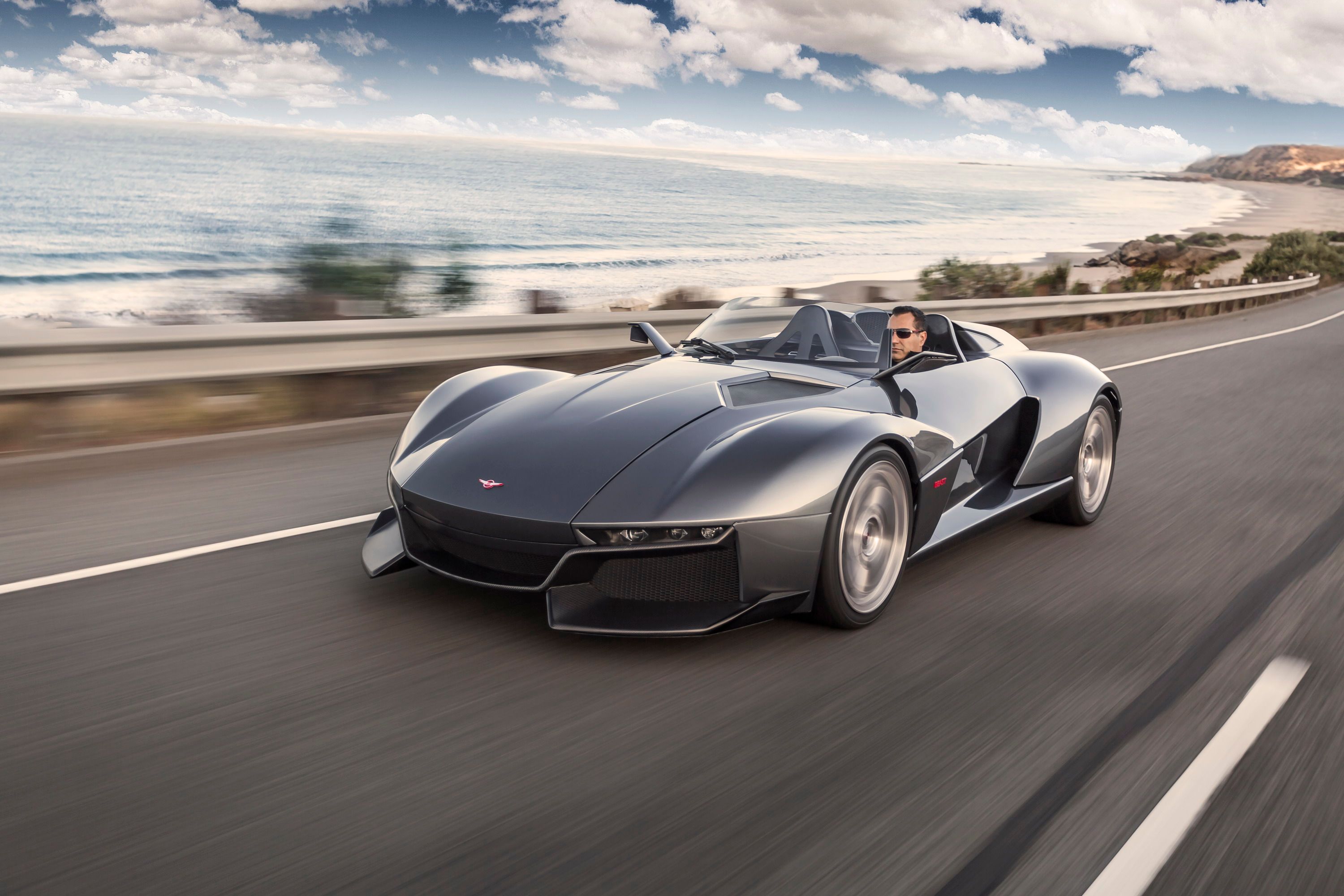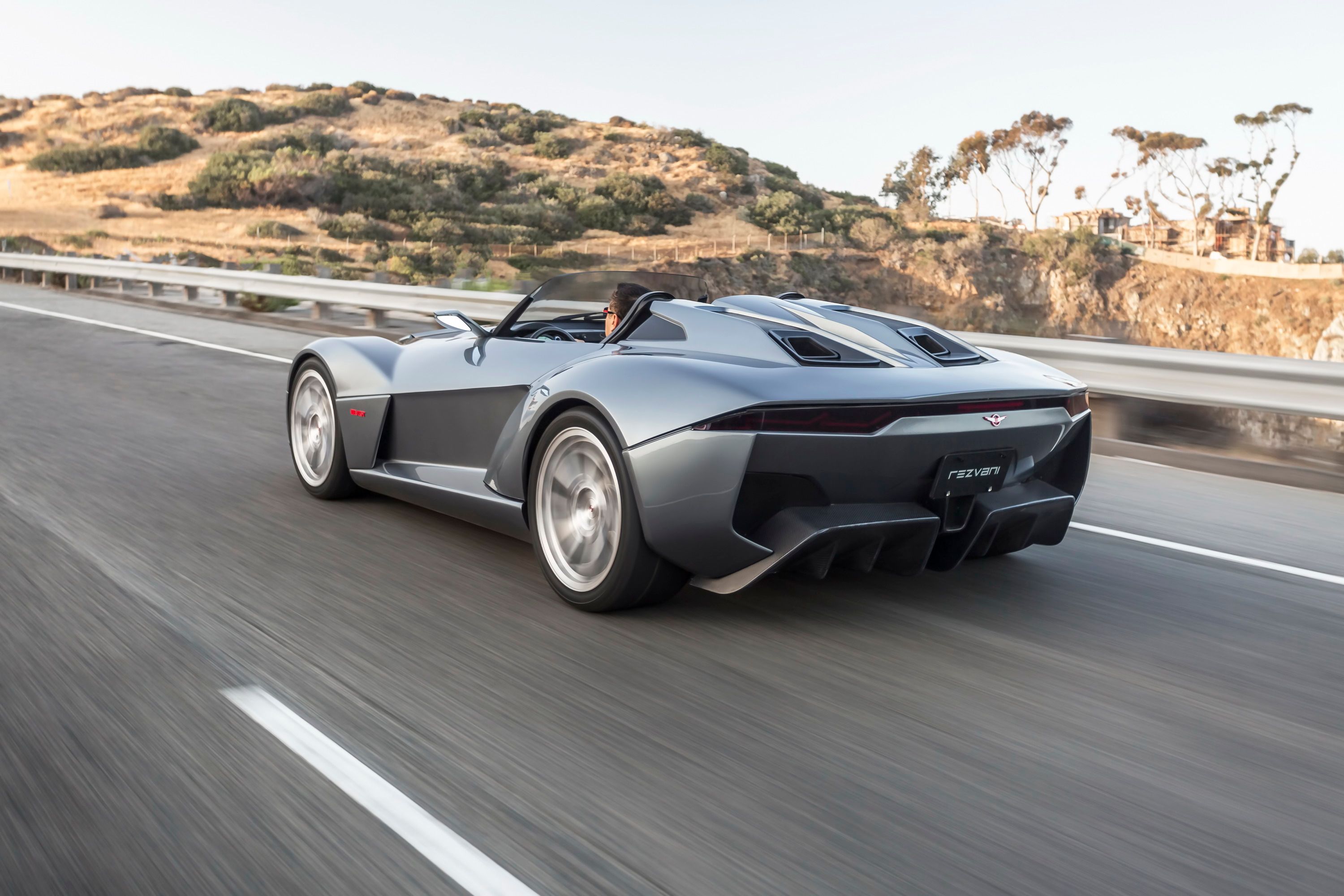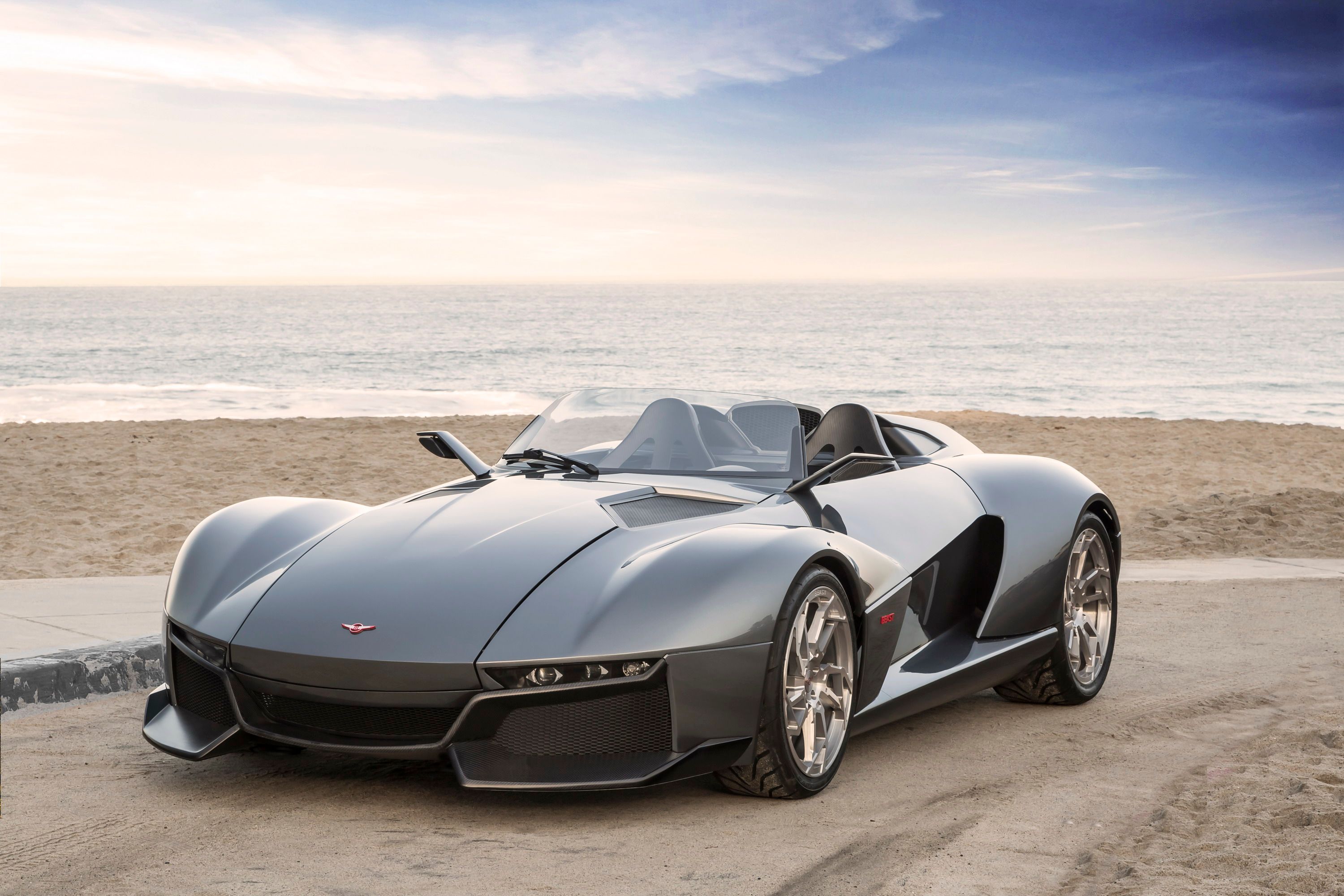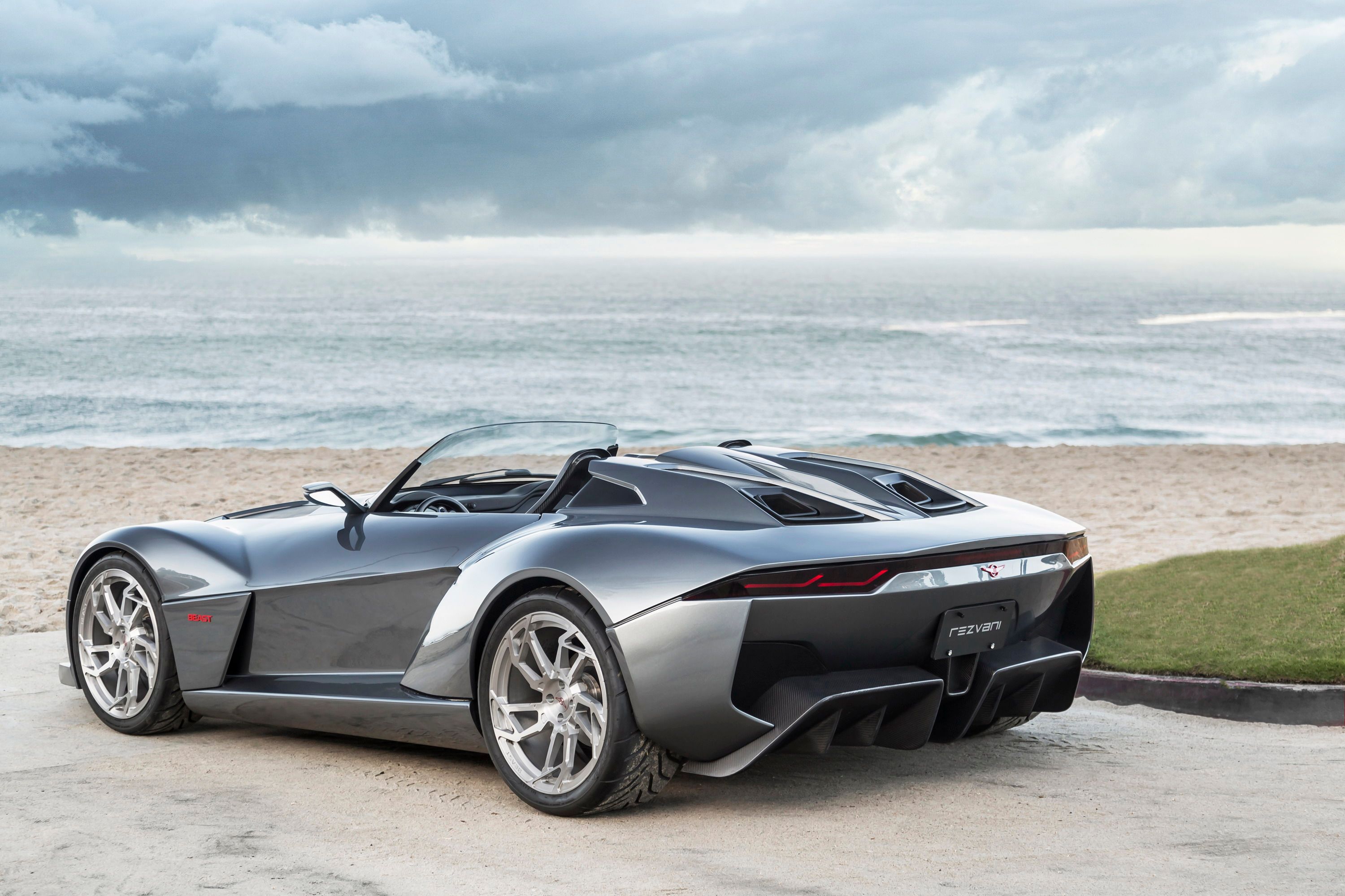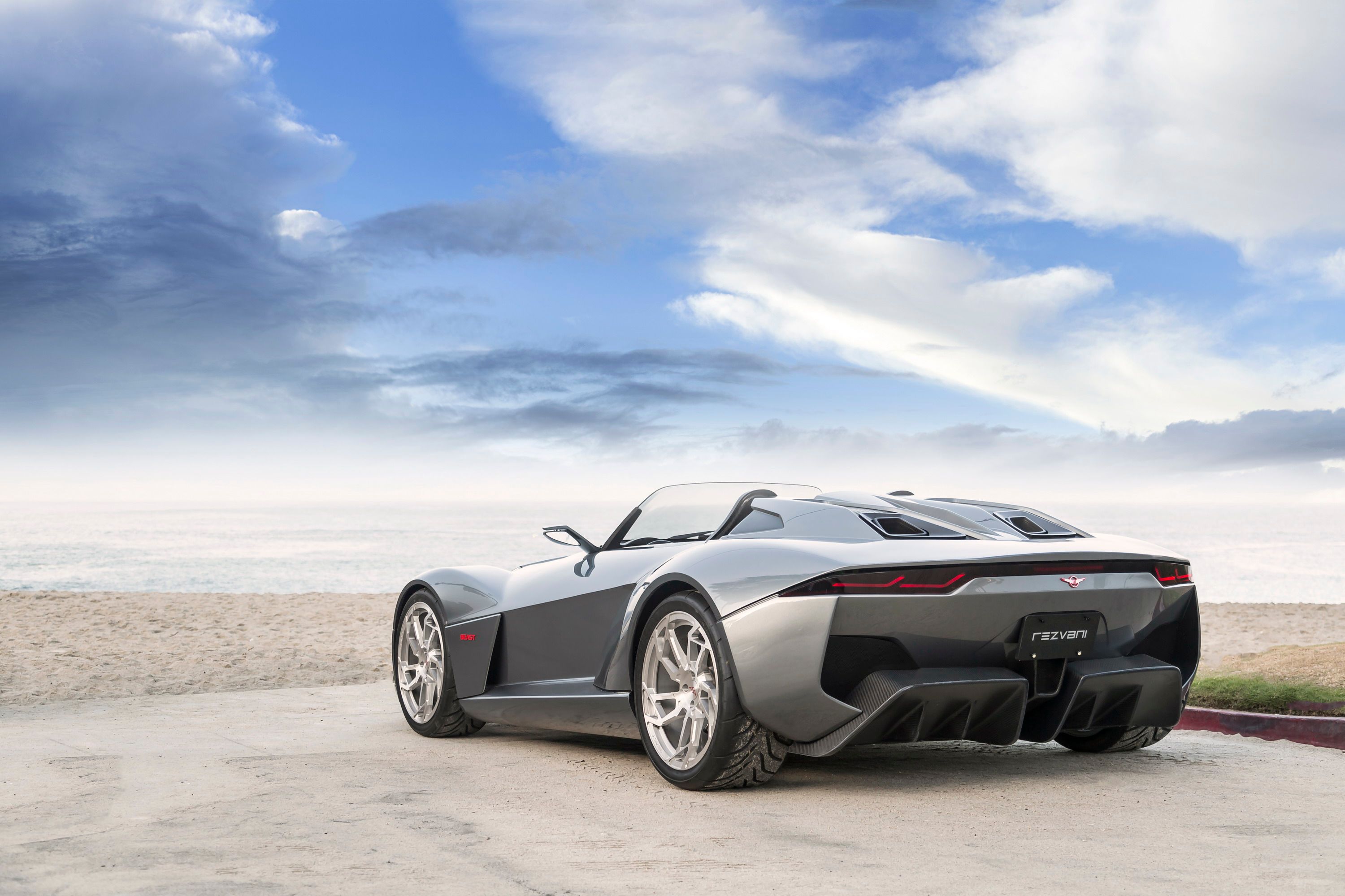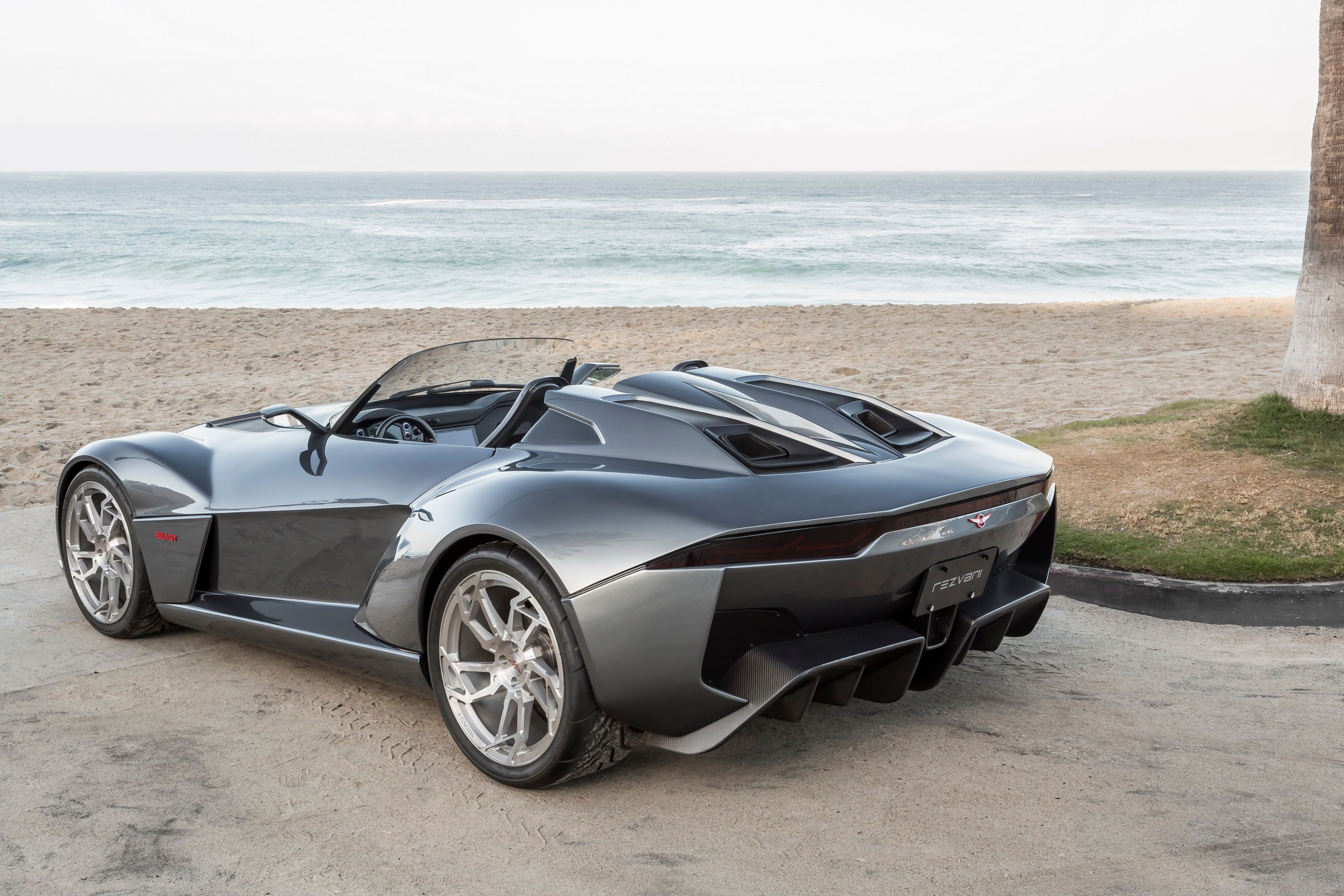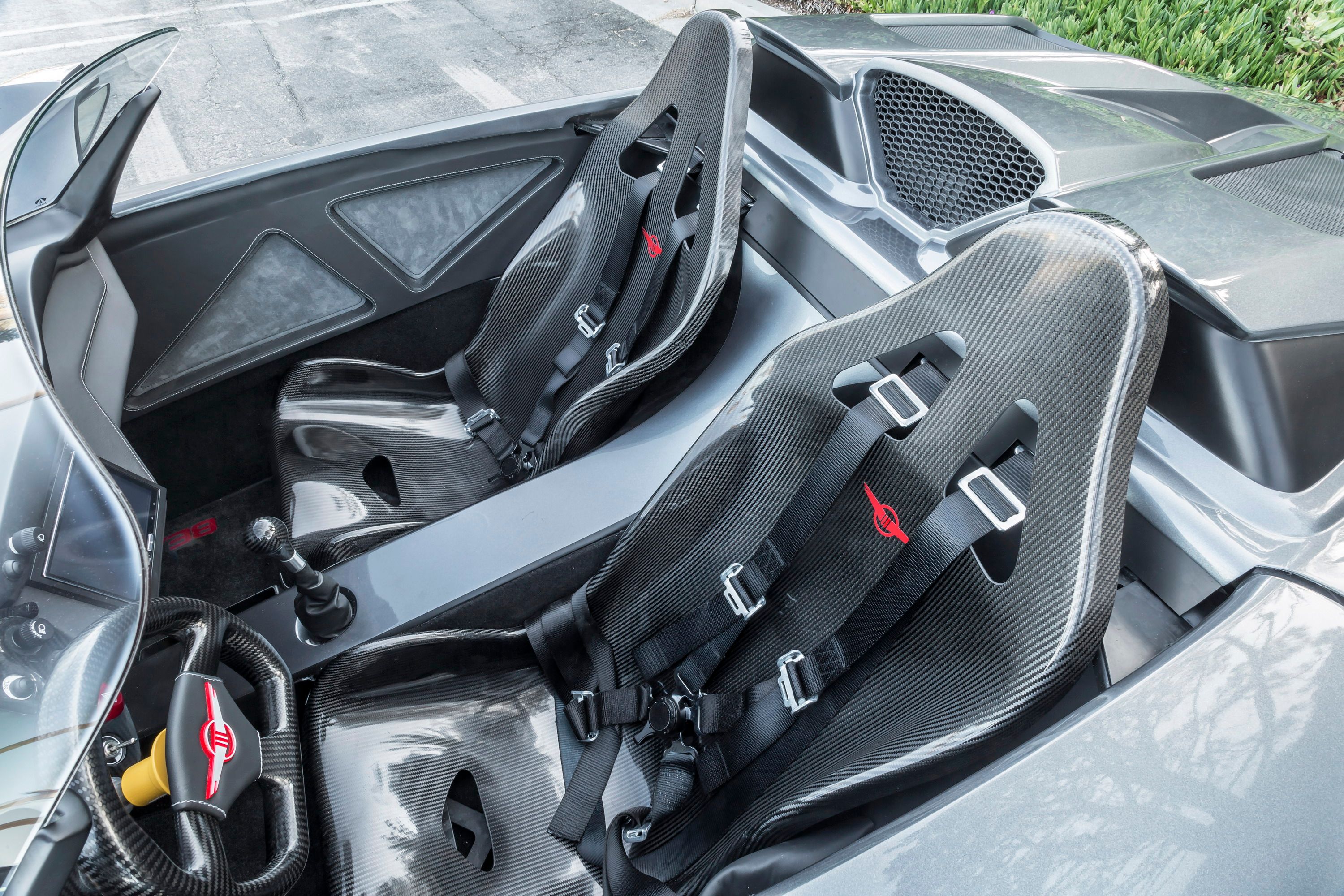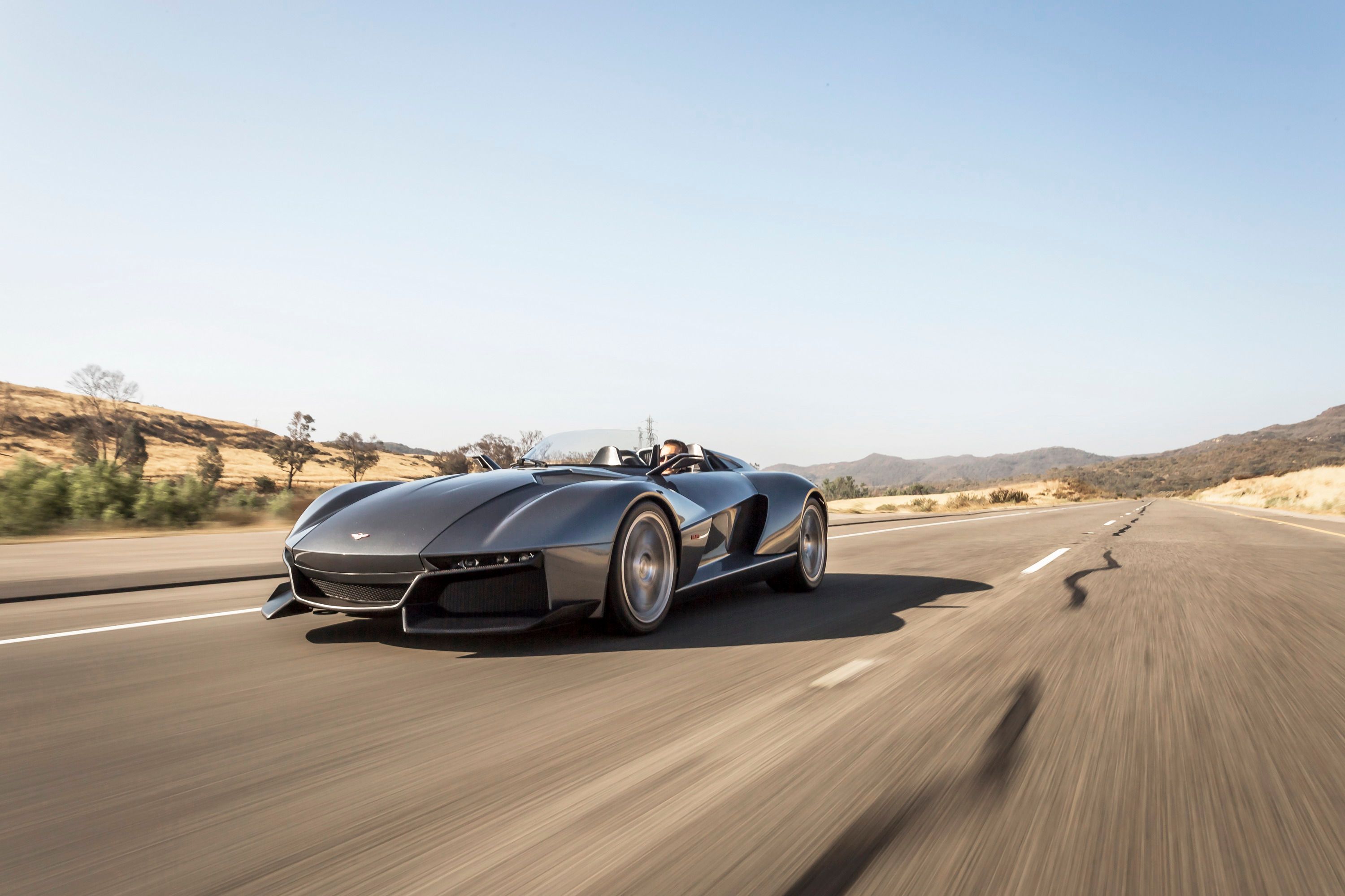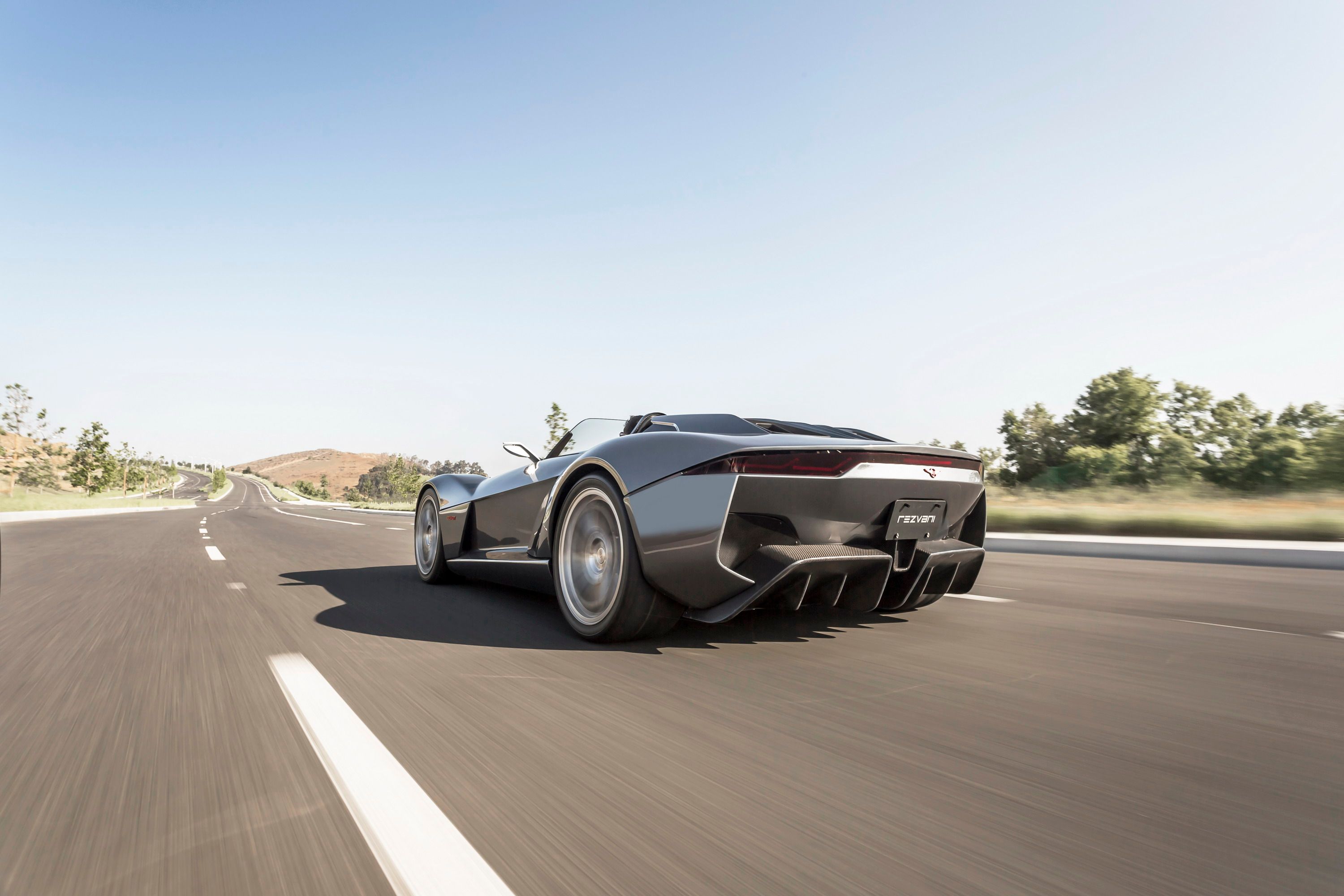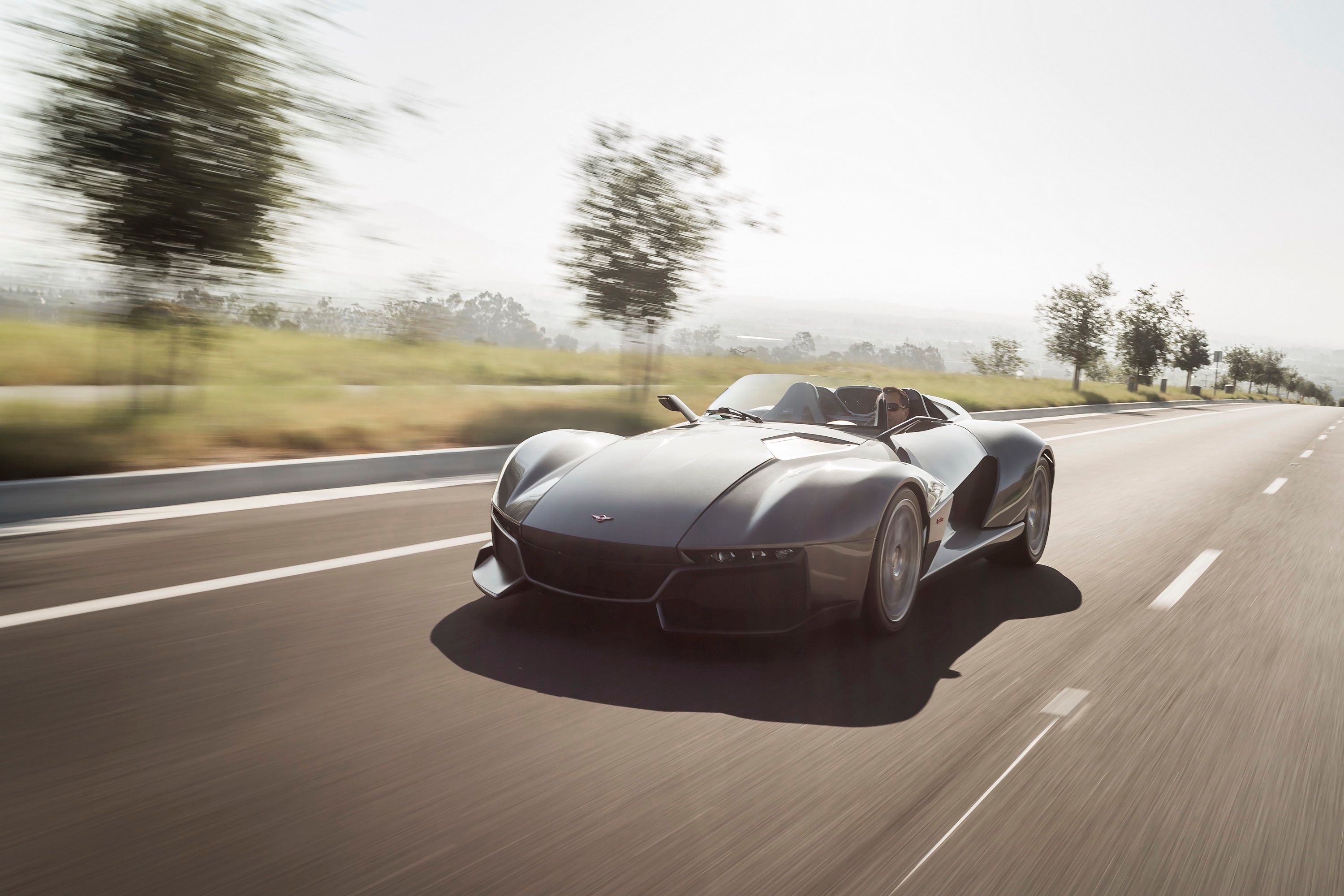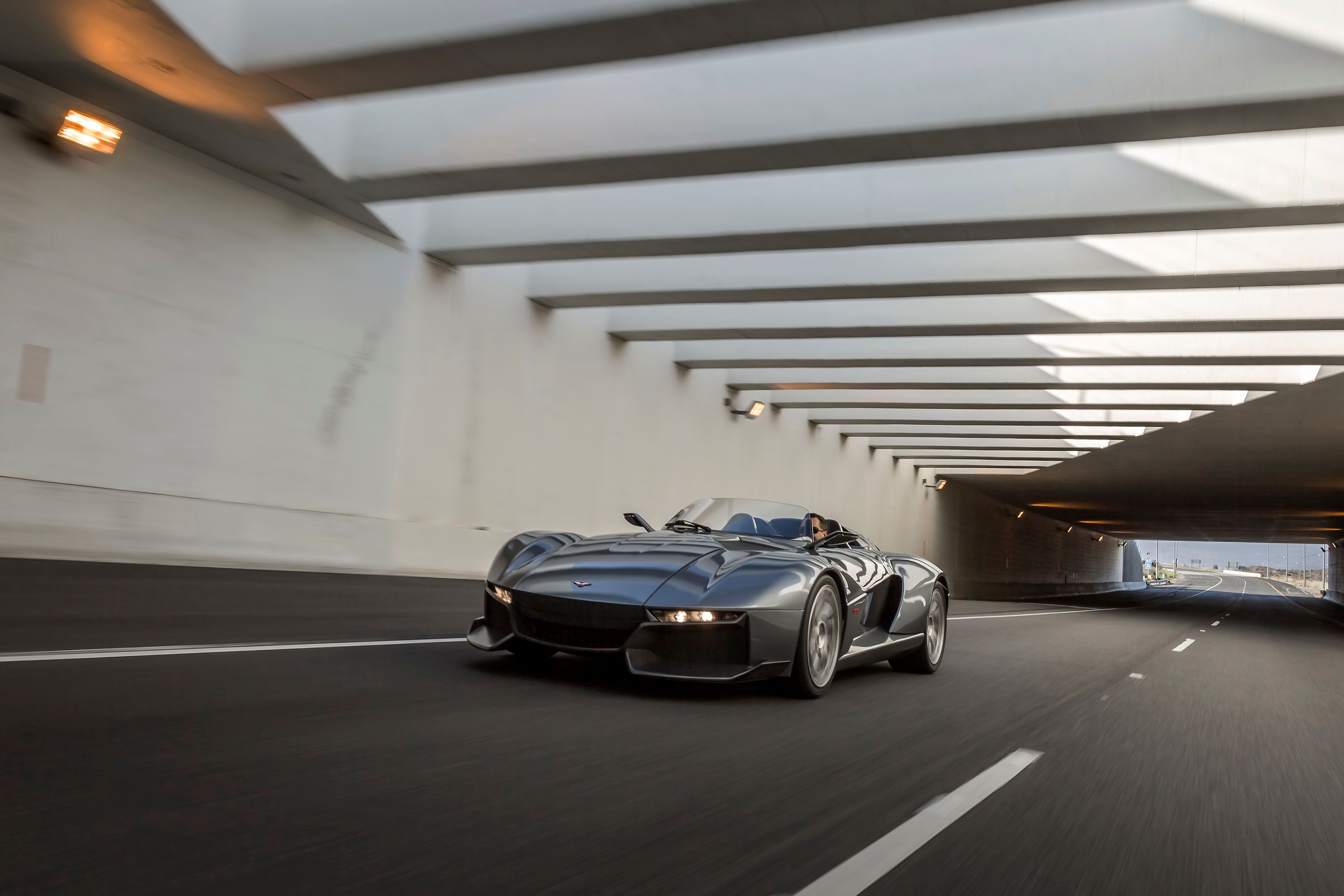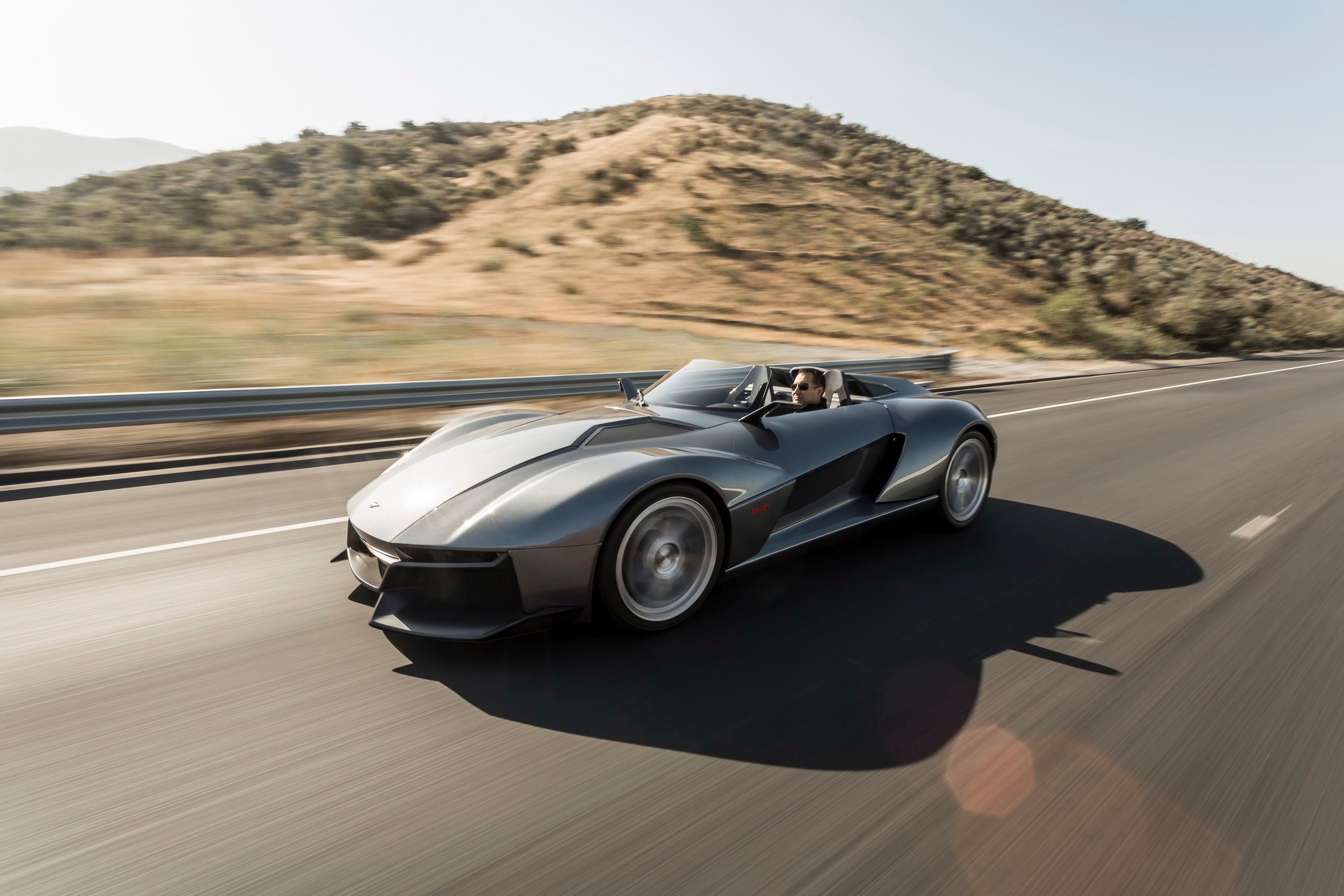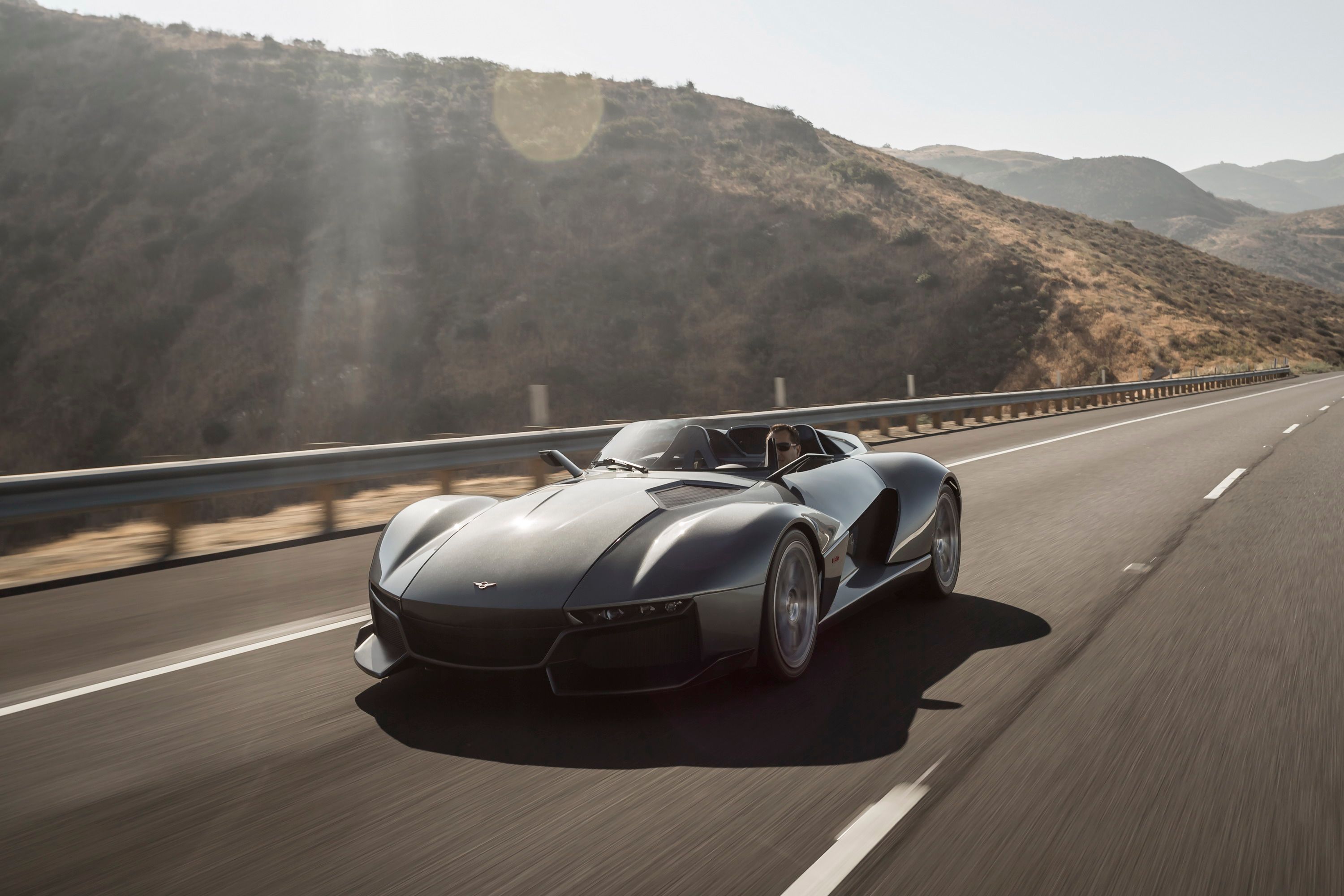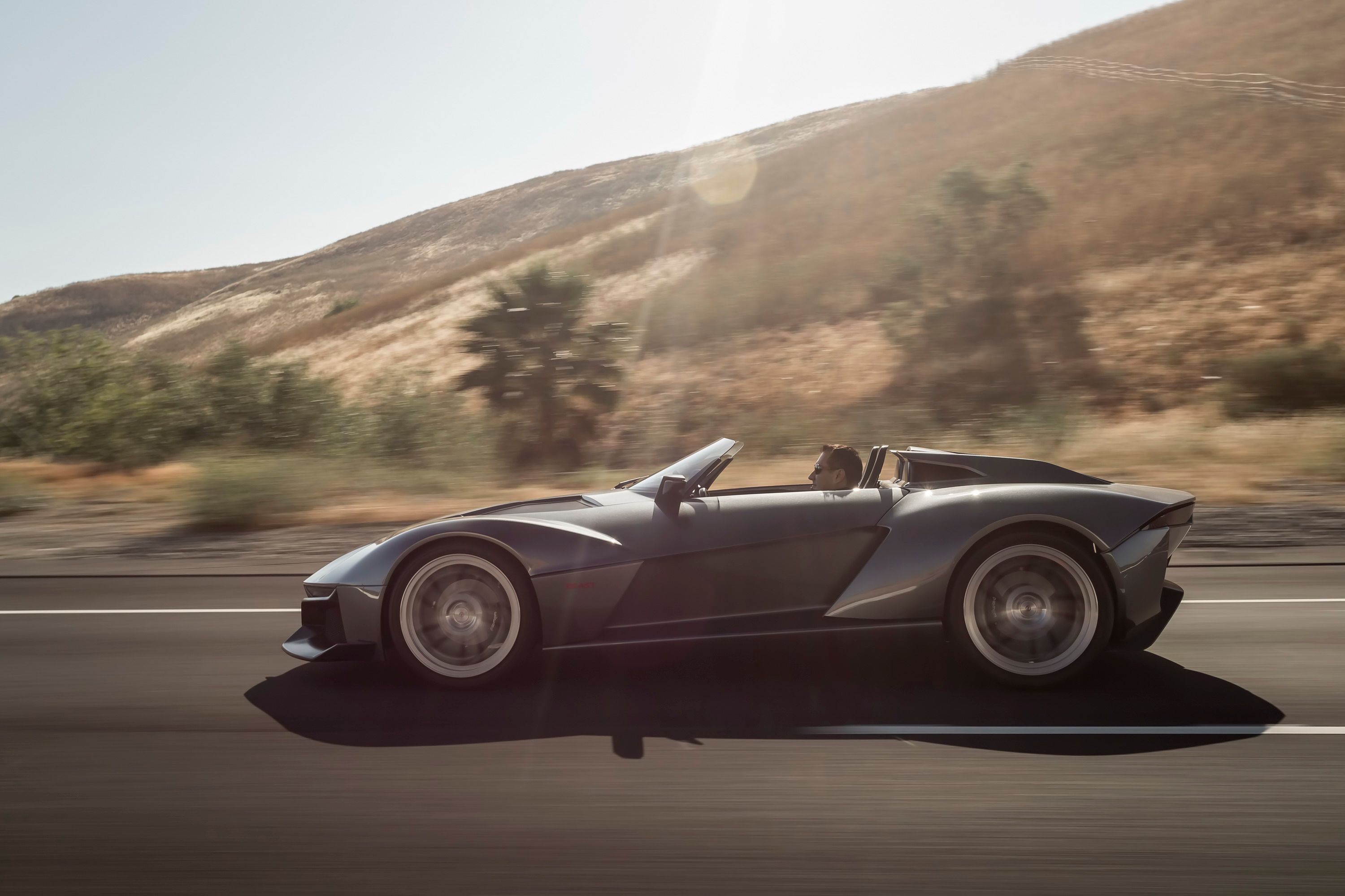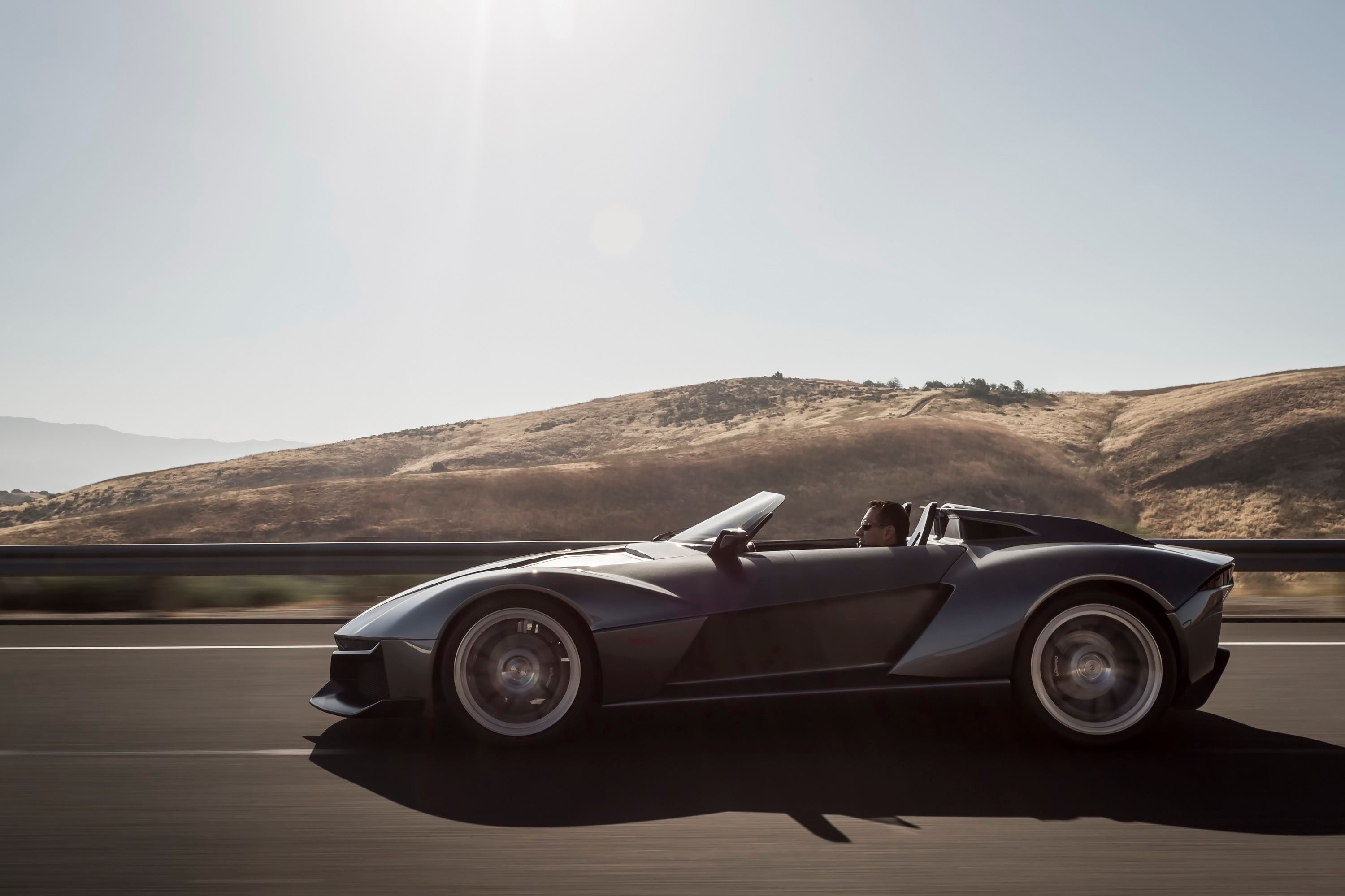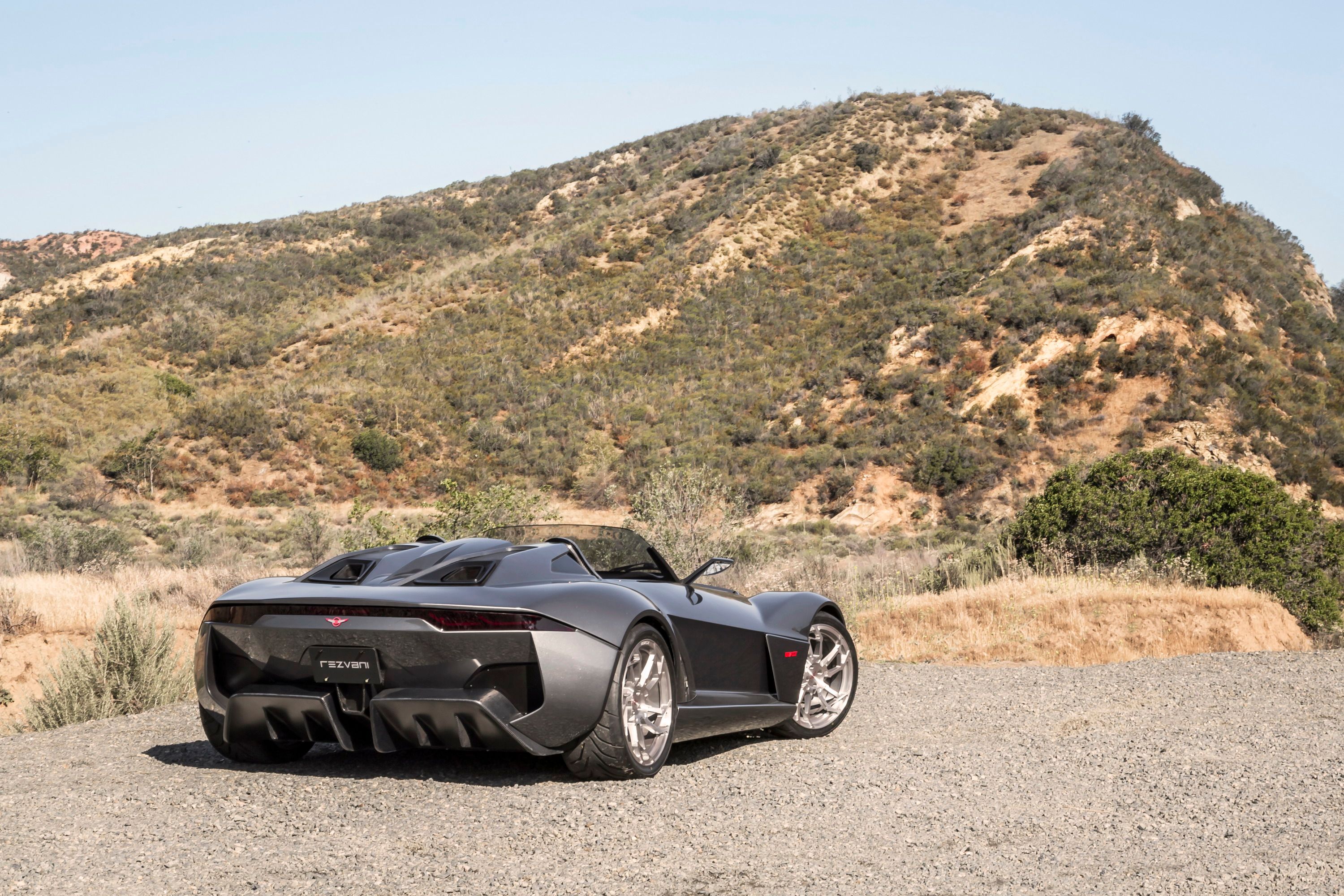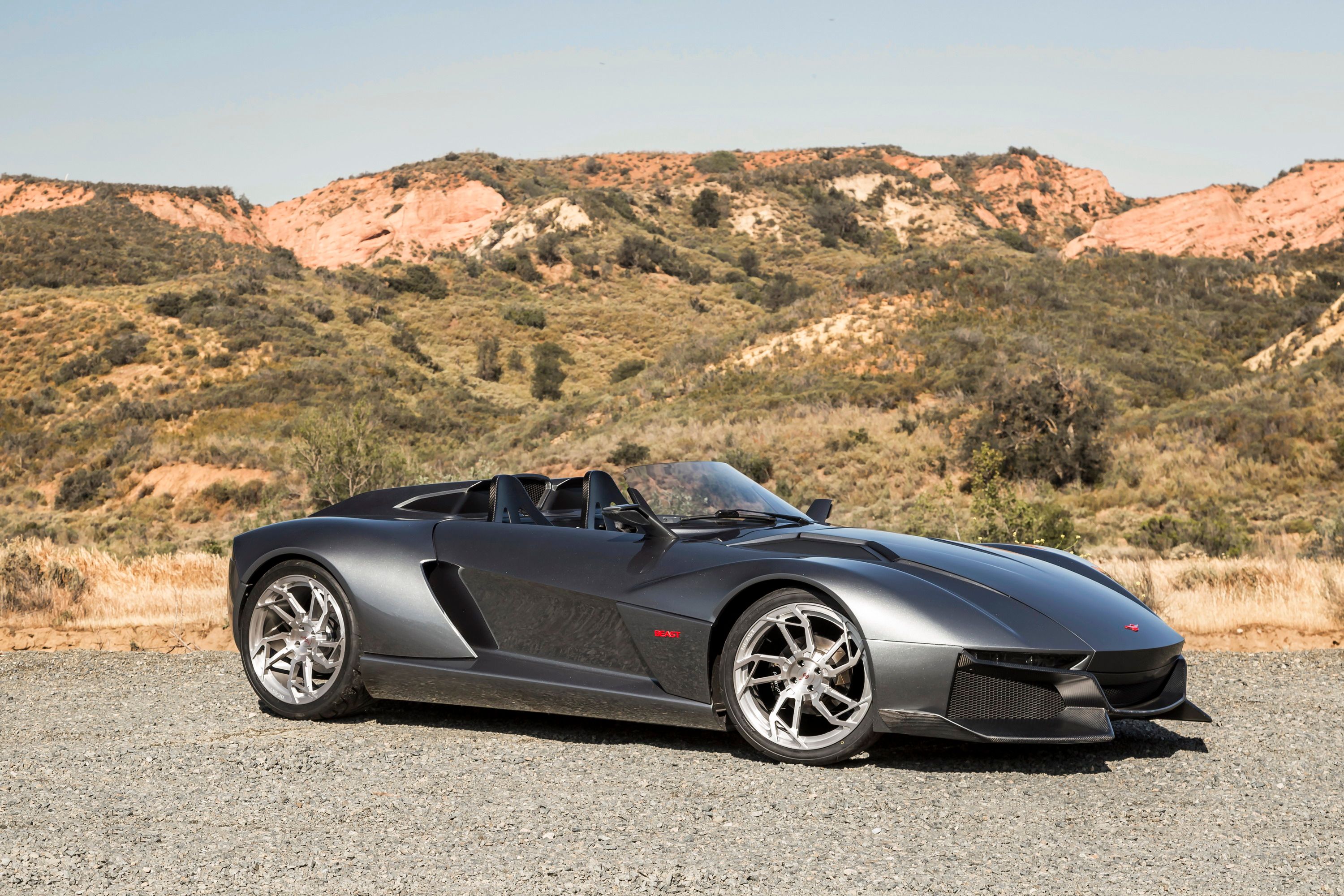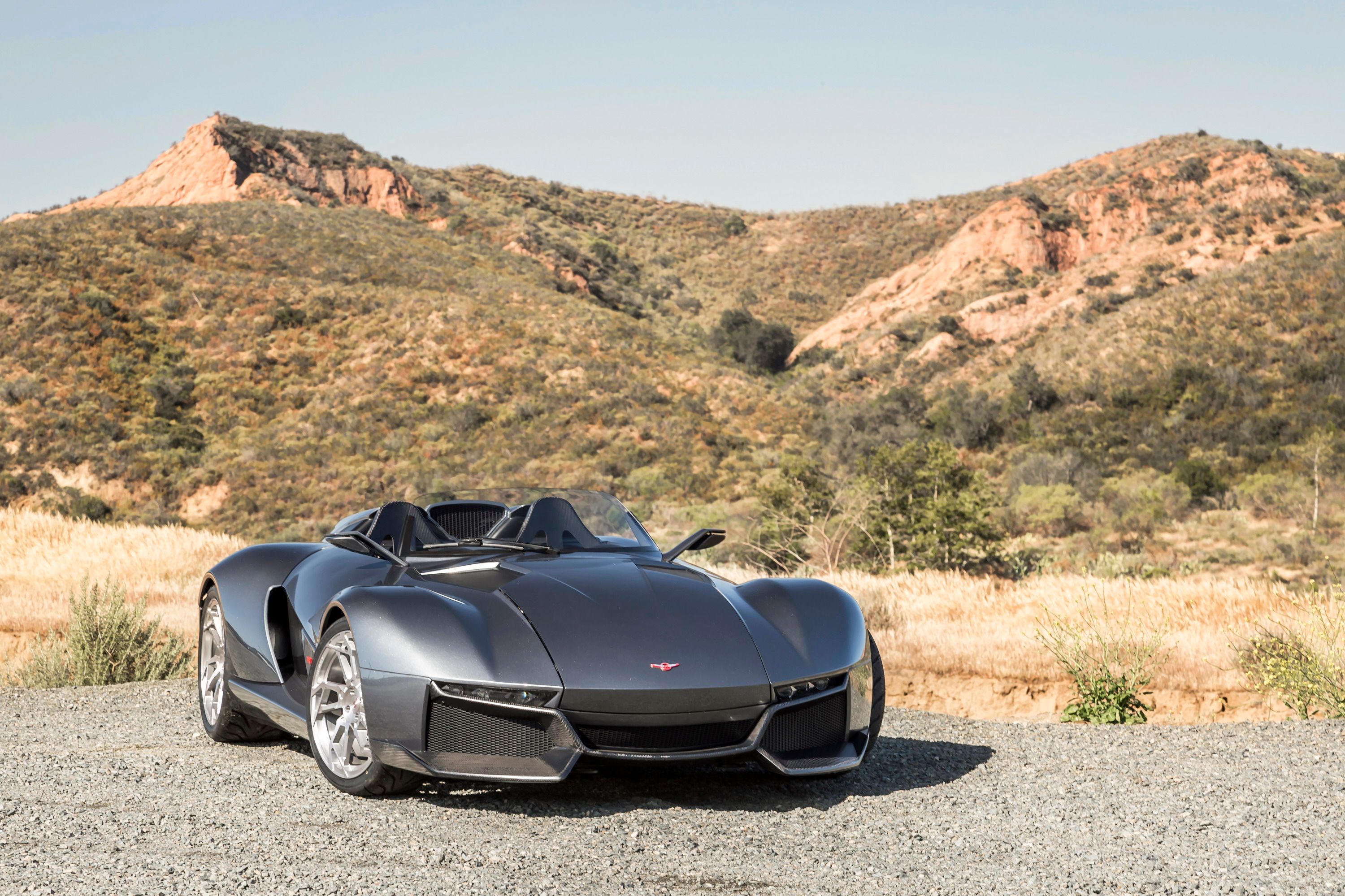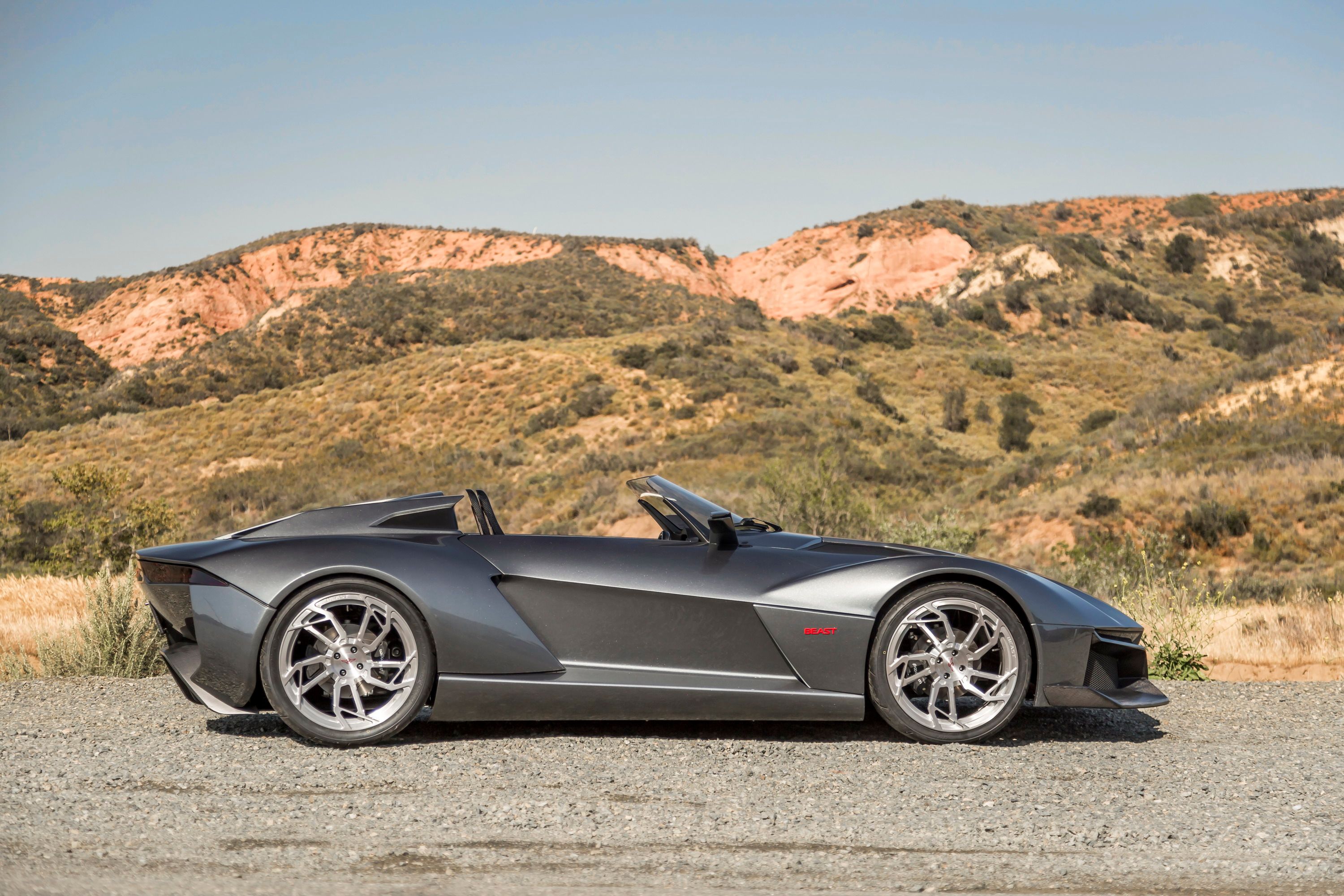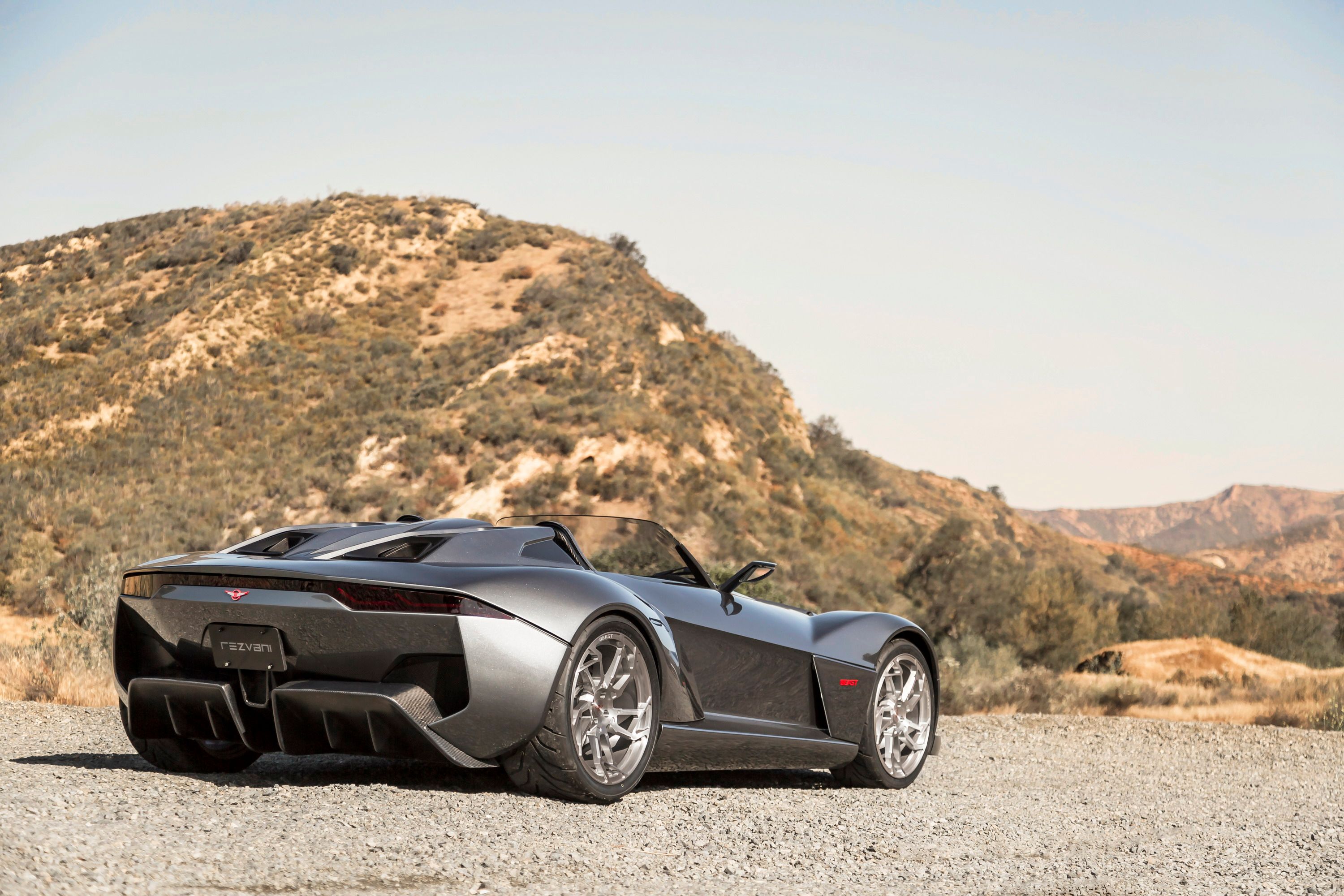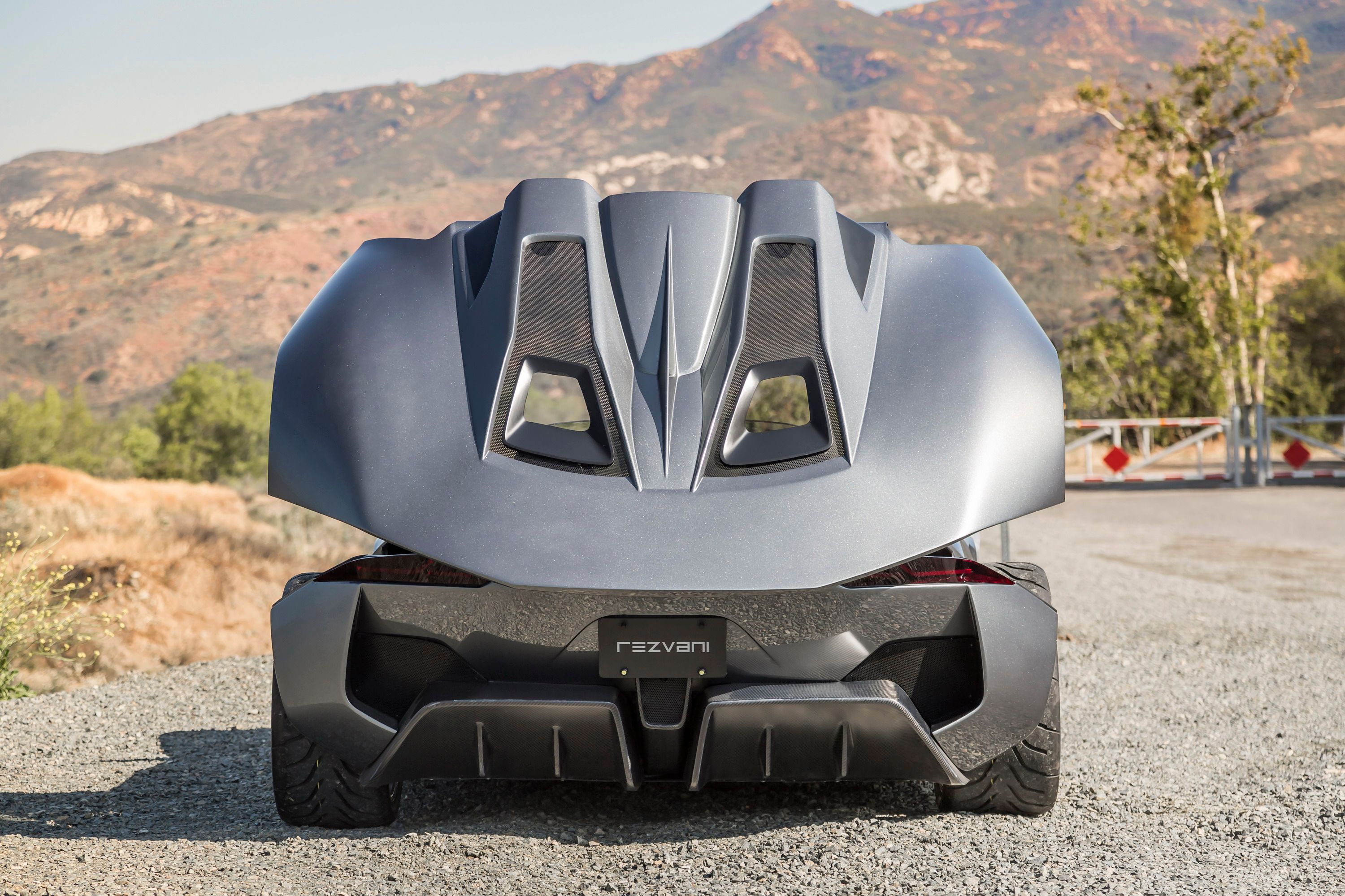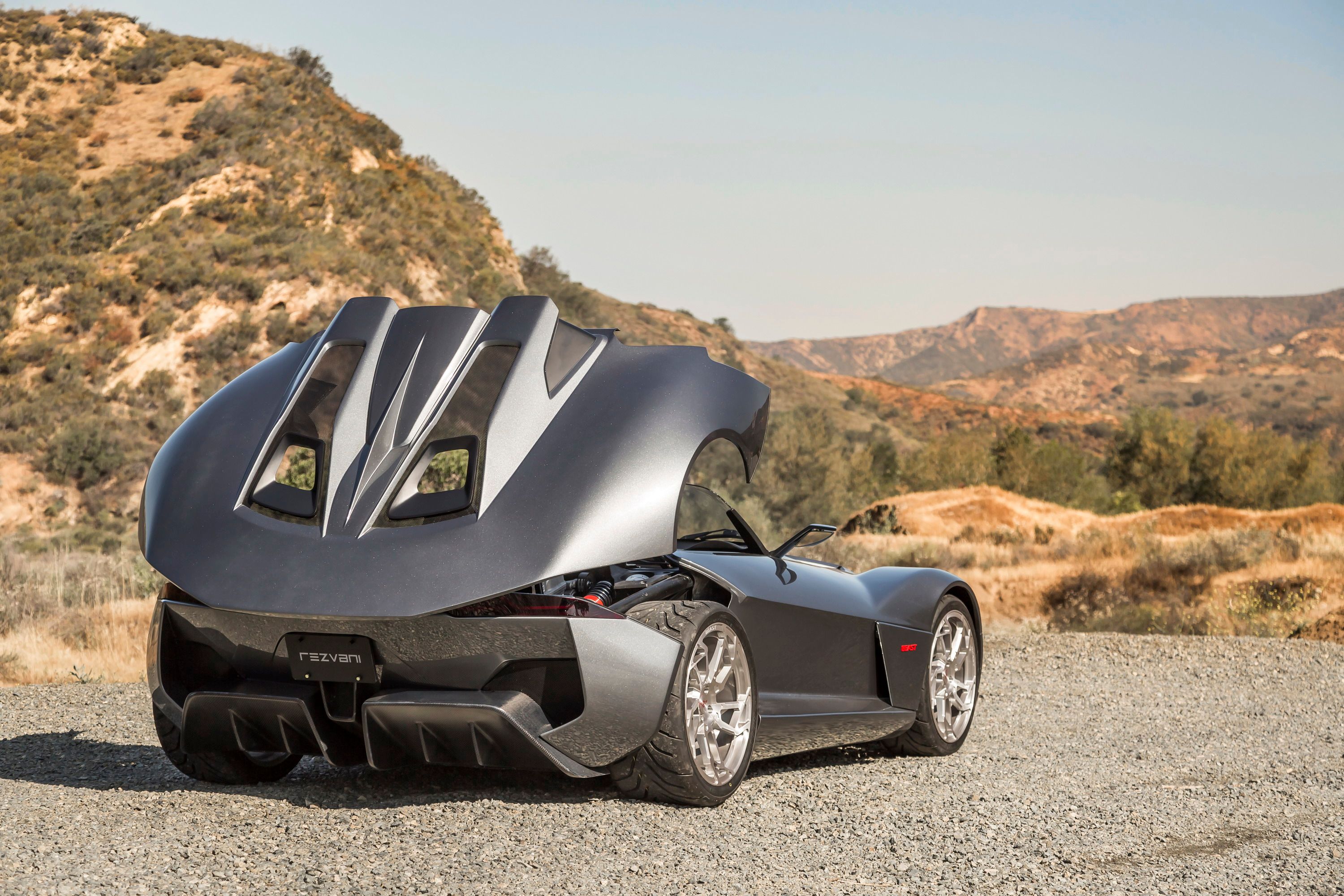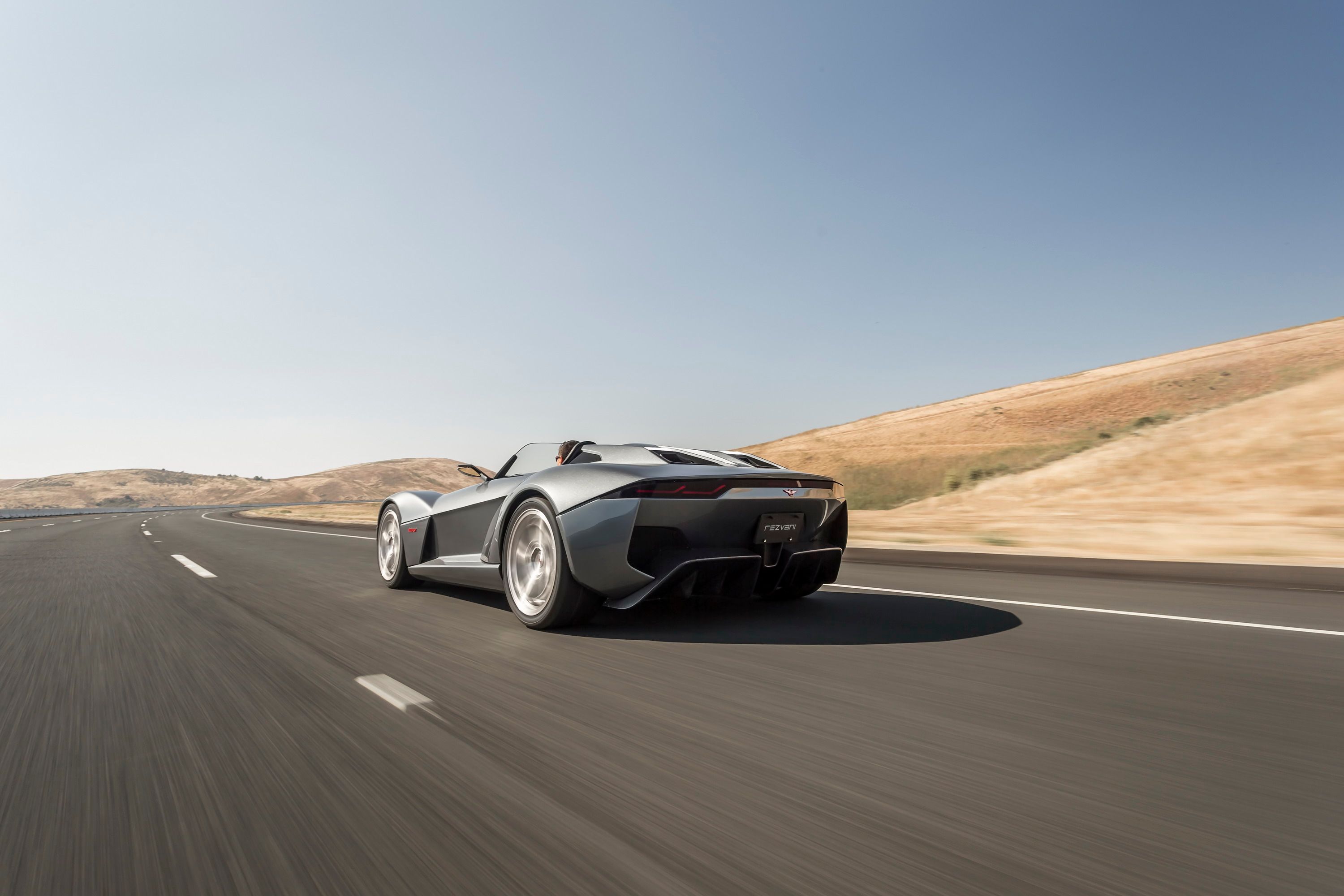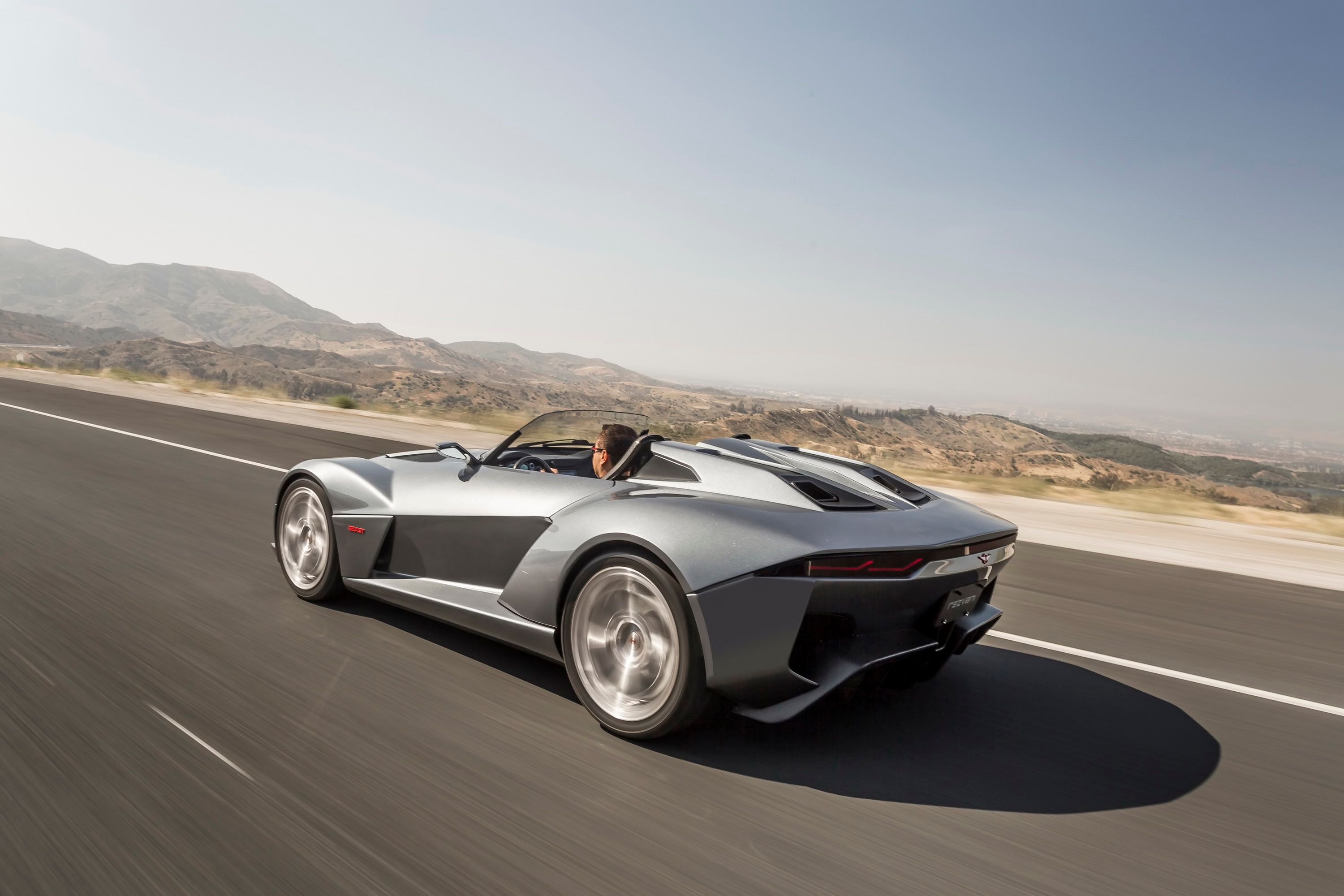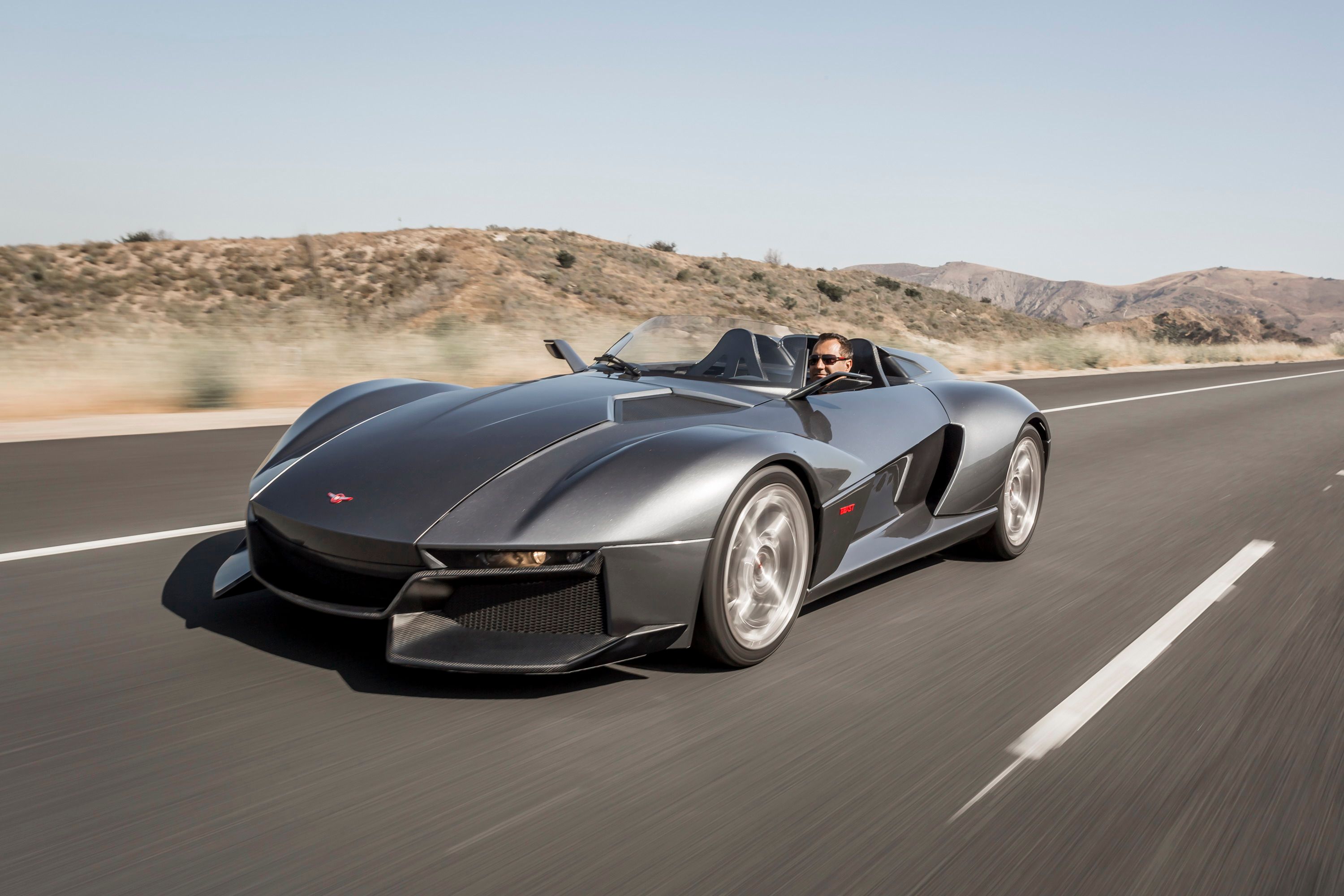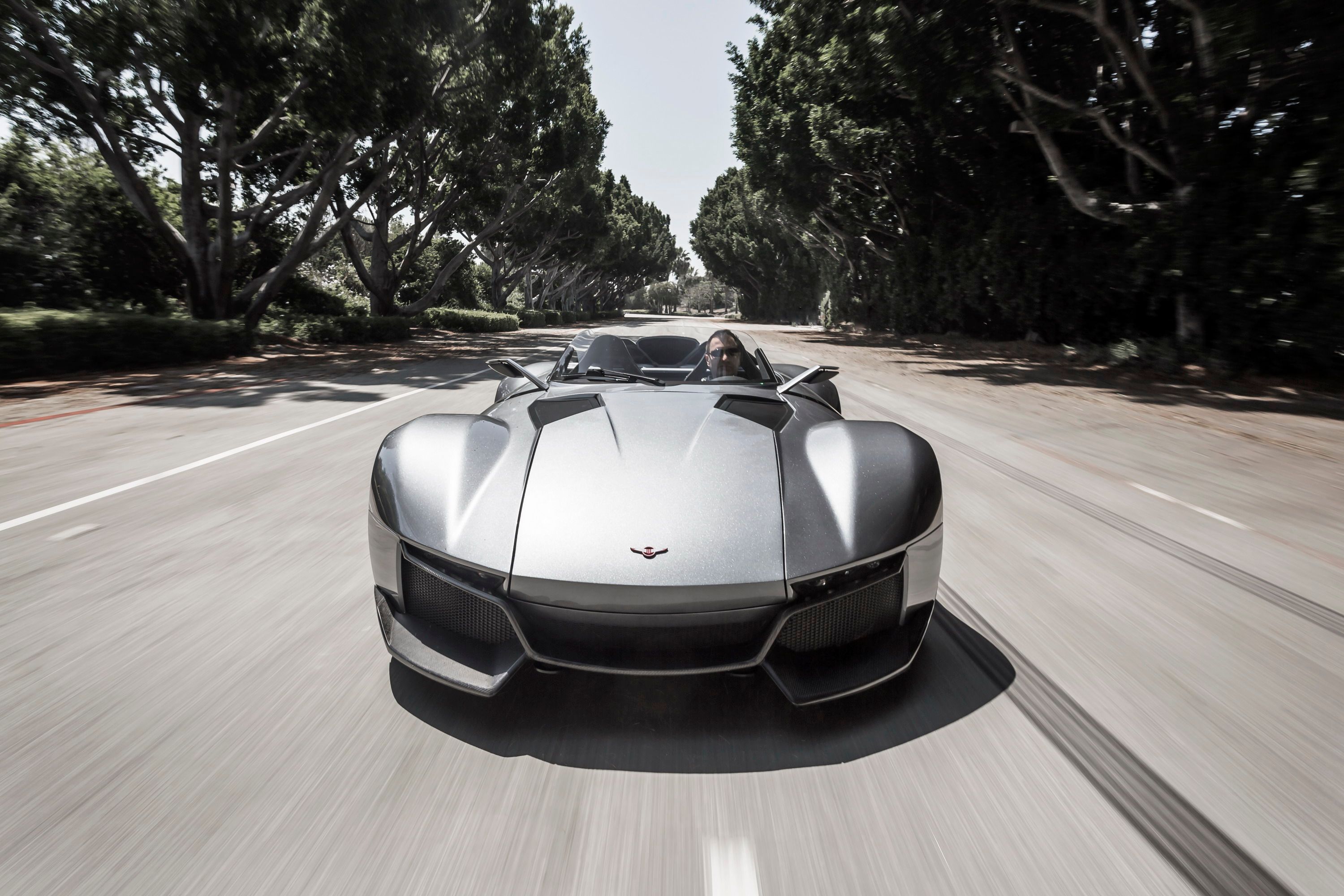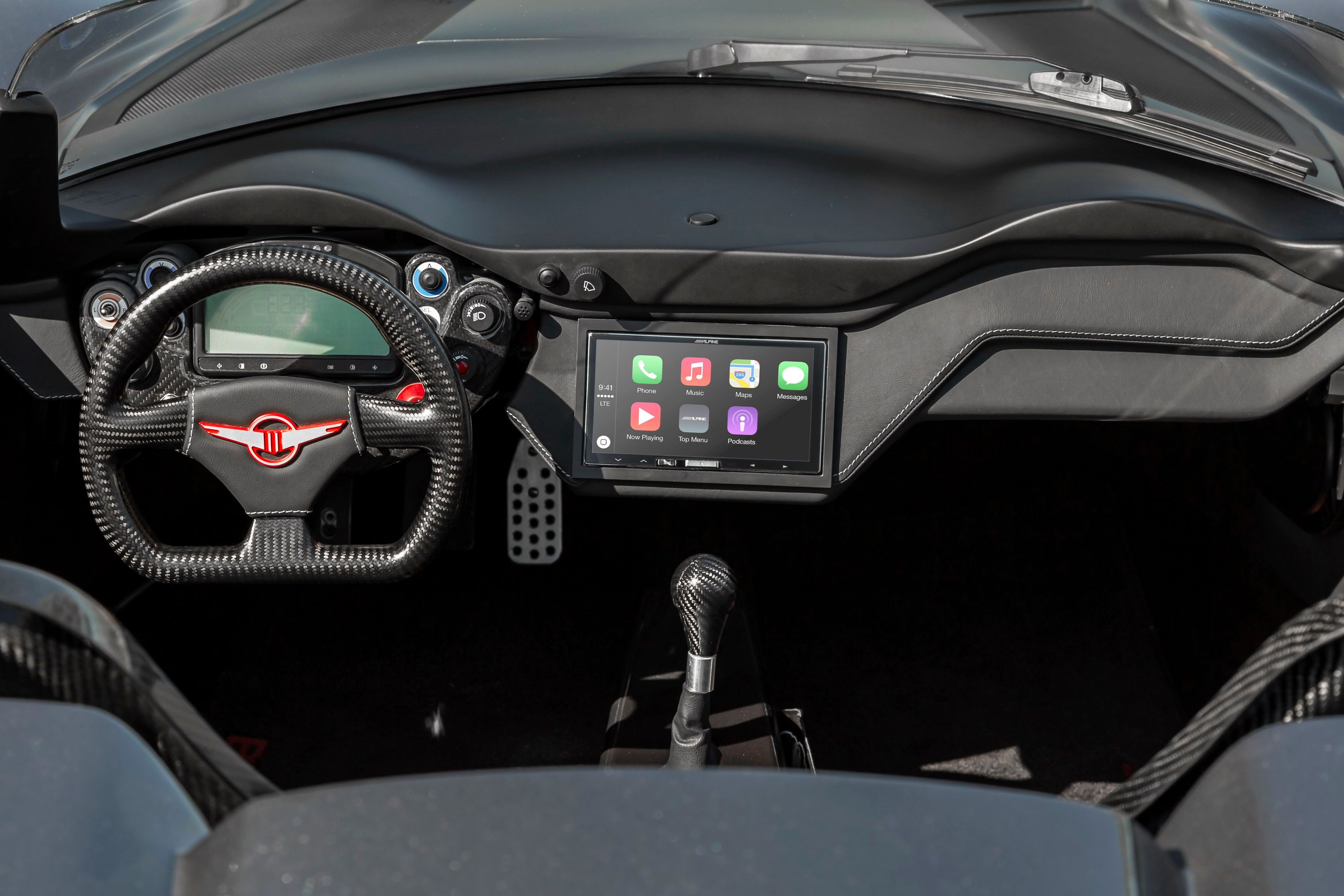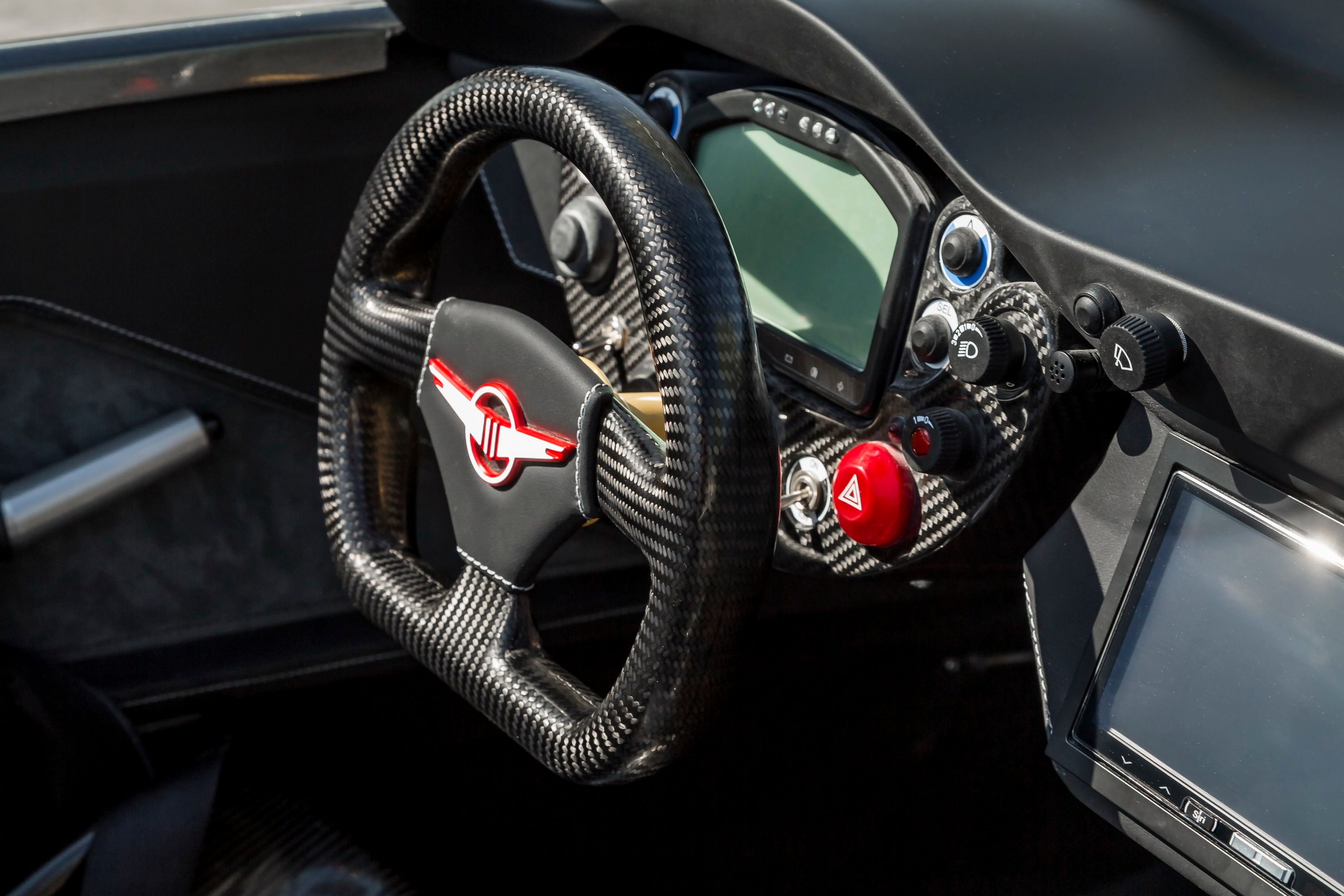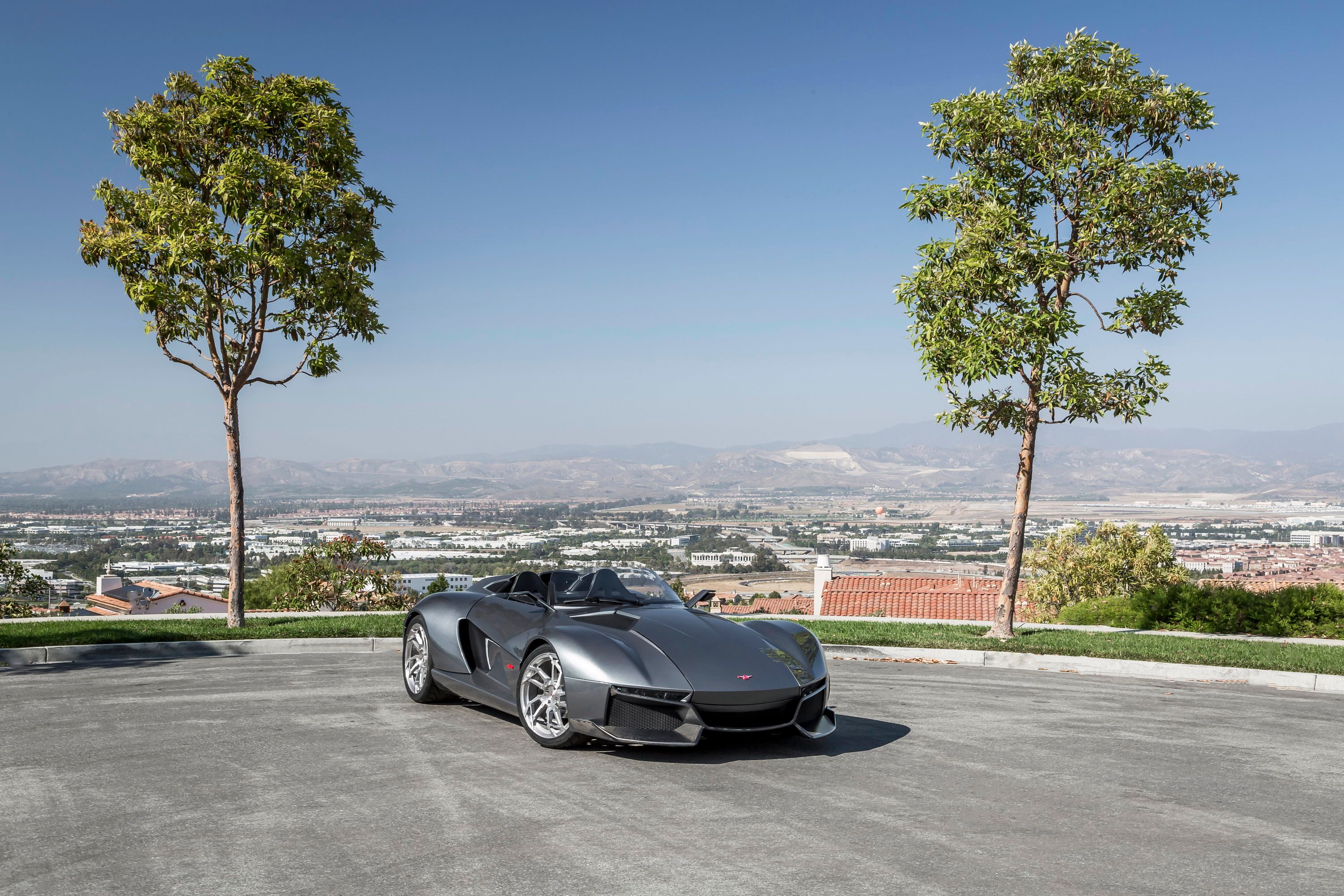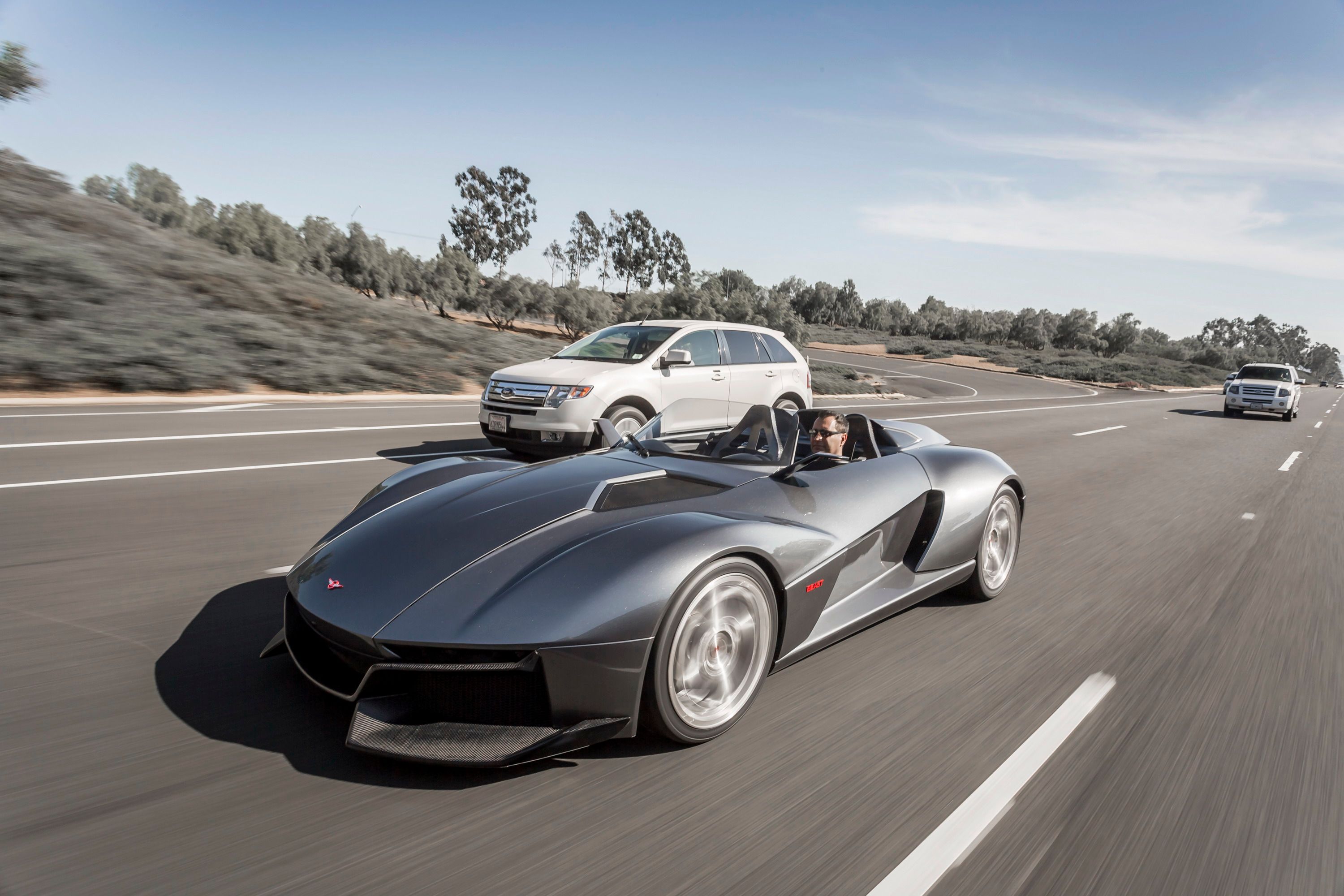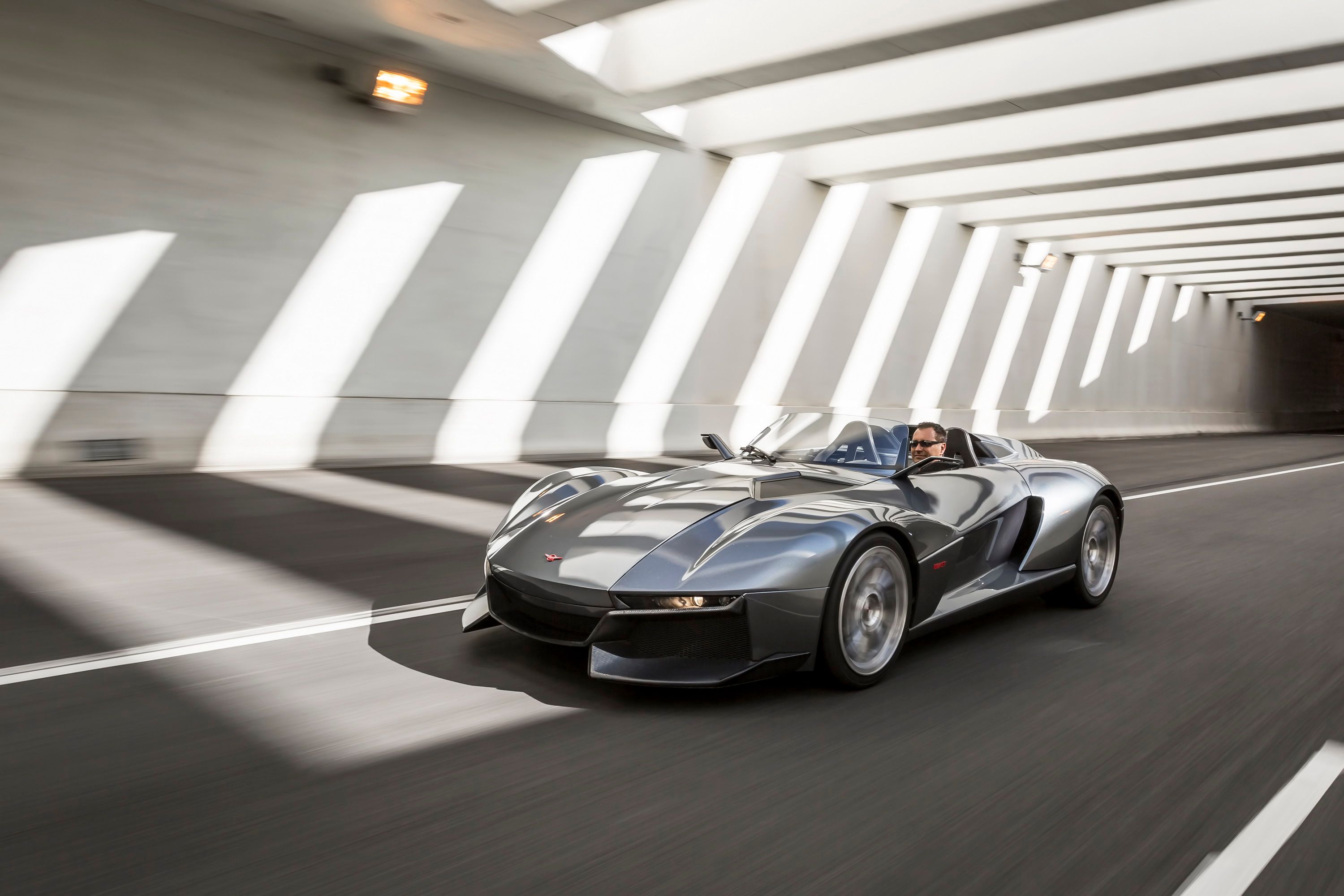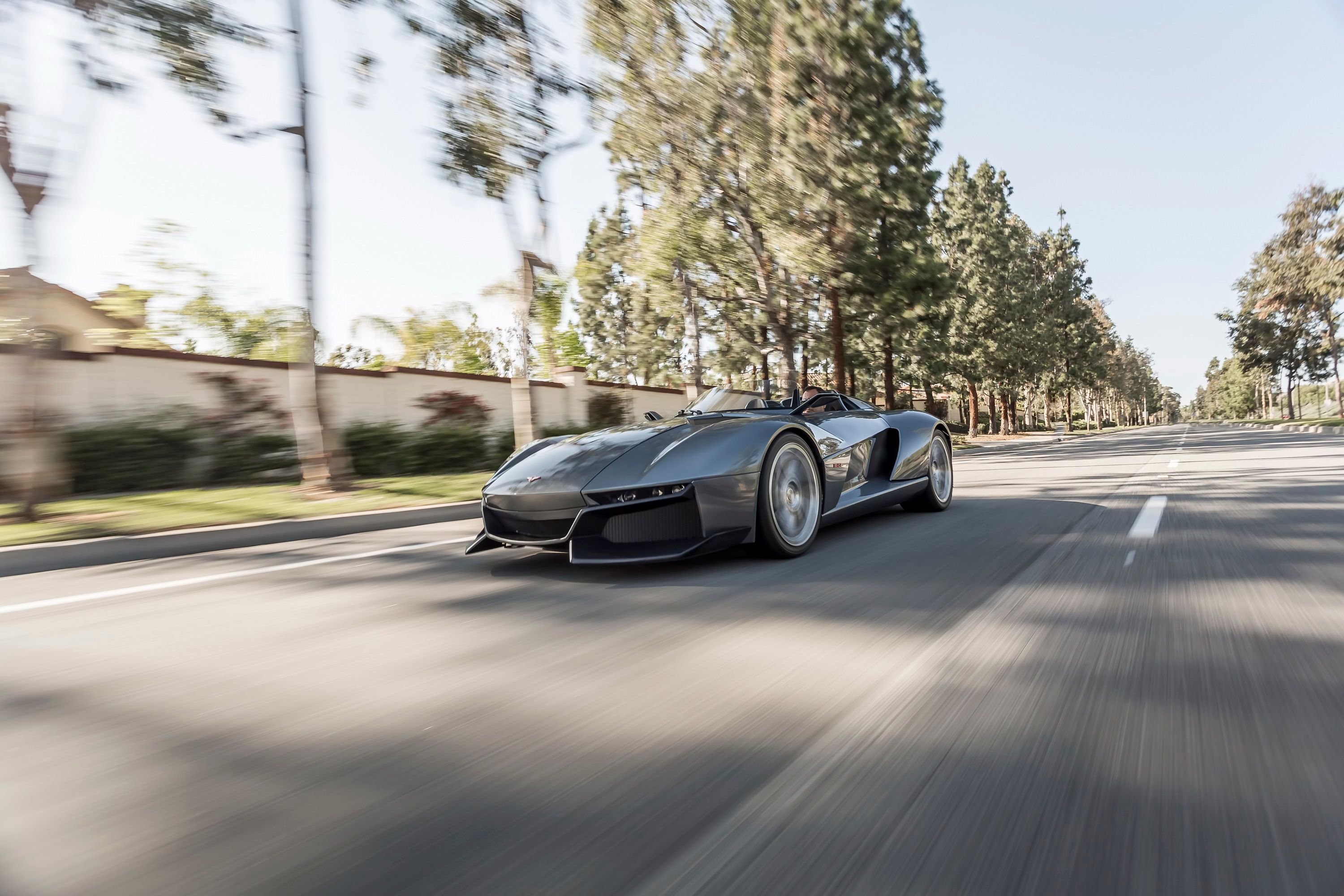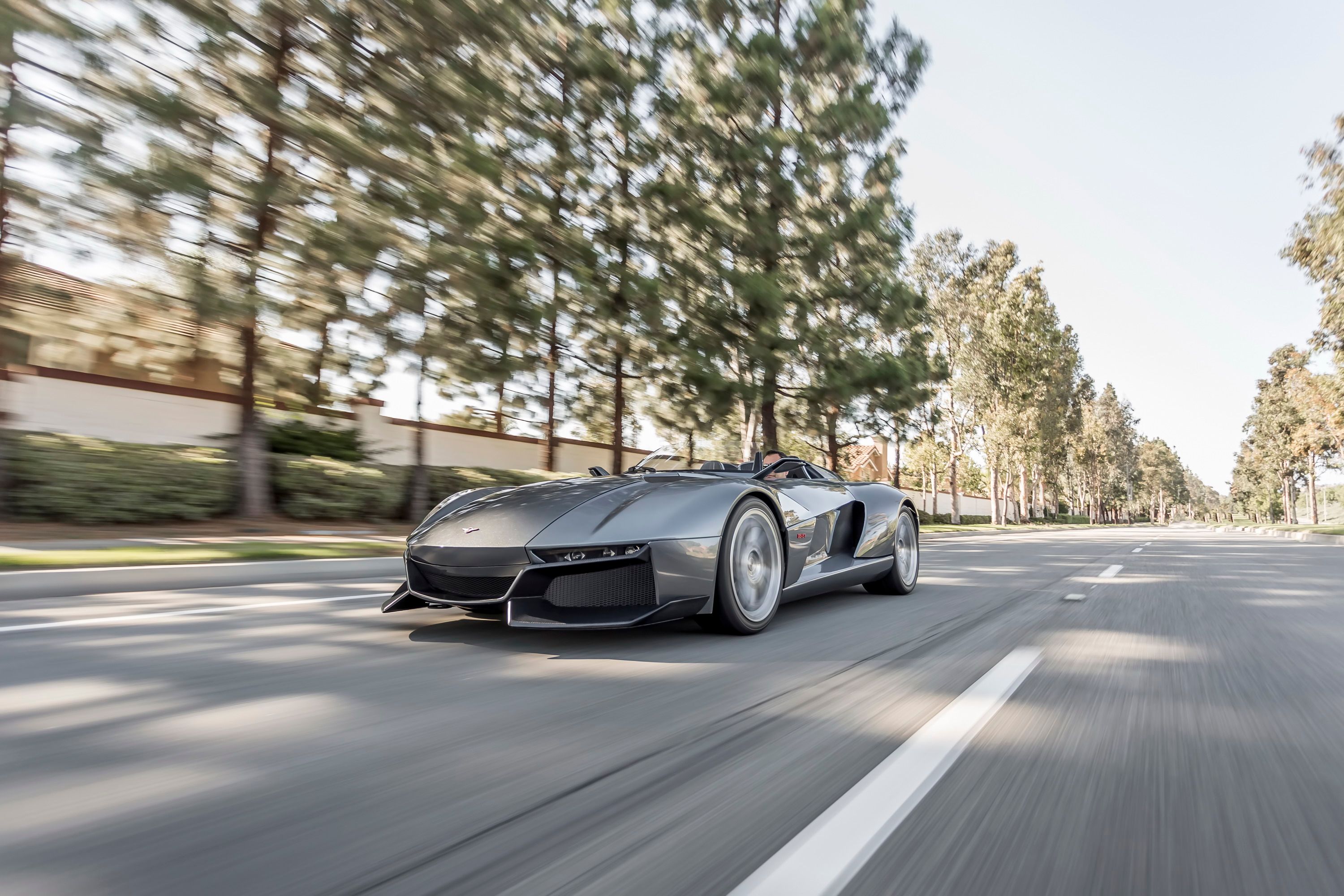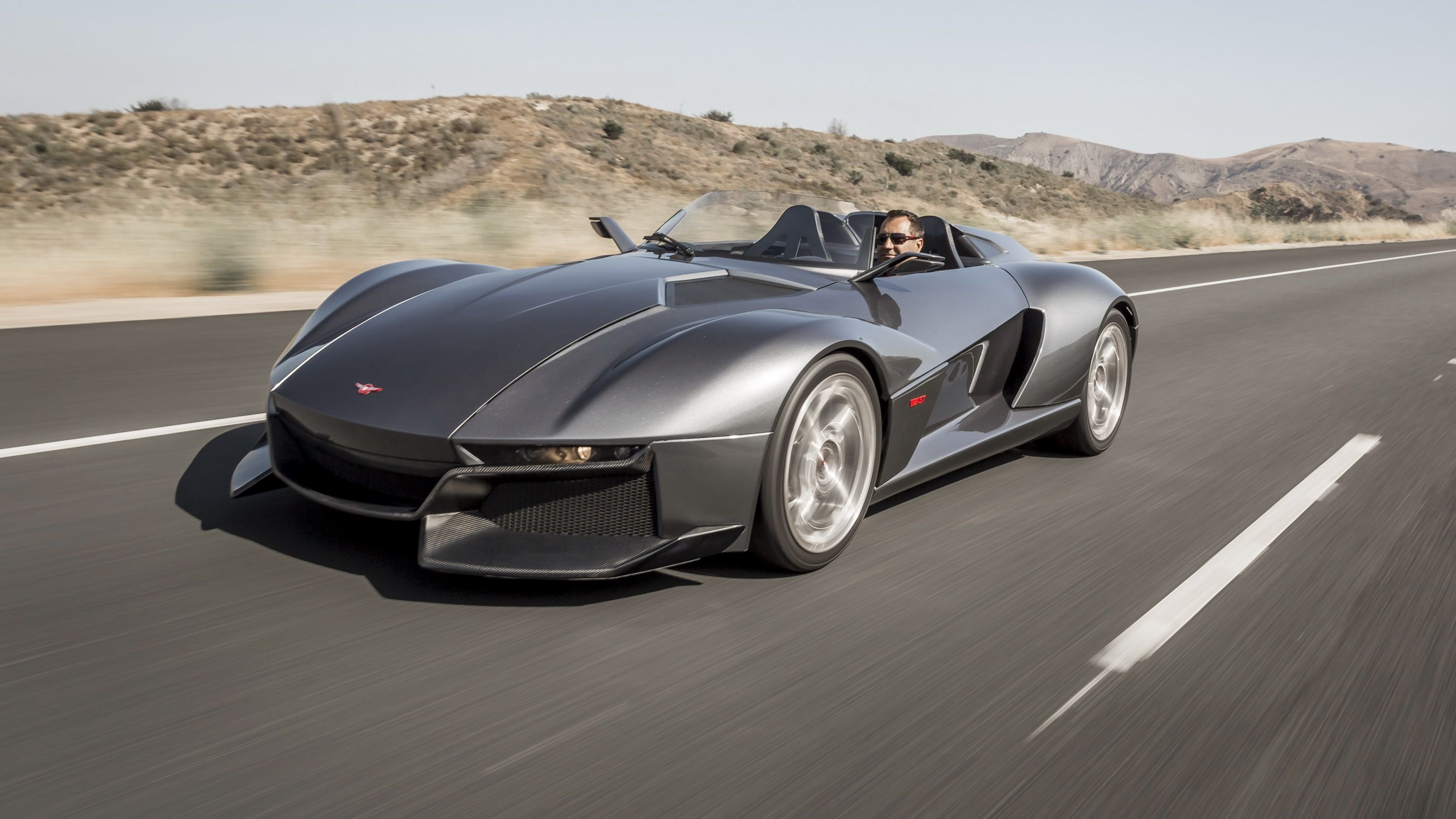There aren’t many outrageously aggressive road-legal track-day cars that are made in America, but there are a few. One of them is the new 2016 Rezvani Beast. While the name may sound a little juvenile at first, one look at the body, and you’ll be in agreement; this thing is a beast. The body itself is a combination of mean looks and aerodynamic dominance that provides just the right amount of downforce to keep this 500-horse “beast” on all fours. The body is designed specifically to allow air flow from the front air intakes, through the front wheel wells, into the inlets for the engine intake, and finally out the diffuser in the rear. The interior is all about business with two racing seats with five-point harnesses, a carbon fiber steering wheel, a digital instrument cluster, and a touchscreen audio system. The real news about the Beast, however, is the turbocharged and supercharged, Honda->ke34 Racing engine that is hidden below that aggressive body.
At first, you might what to shake your head at an American-built monster with Honda power behind it, but don’t be so quick to dismiss it. This Beast can hit 60 mph in 2.7 seconds on the way to a respectable top speed of 165 mph. Of course, you could be thinking “big deal, there are plenty of cars that can hit those kind of performance numbers.” And, you wouldn’t necessarily be wrong, but how many of them are made in America and are road-legal here in the U.S.? With that said, this is one interesting car, so check out our full review of it below.
Continue reading to learn more about the Rezvani Beast.
2016 Rezvani Beast
- Make: Array
- Model: 2016 Rezvani Beast
- Engine/Motor: inline-4
- Horsepower: 500 @ 7350
- Torque: 374 @ 5950
- [do not use] Vehicle Model: Array
Exterior
The Rezvani Beast is sheer insanity in every sense of the word, and its looks are no exception. Rezvani->ke4833 designers clearly spent countless hours shaping the body to deliver outstanding aerodynamic efficiency and just the right amount of downforce.
The front end features a chin that has angles that would make the 2015 Lamborghini Aventador Superveloce blush, and its 3D-printed headlights are nicely tucked away under the sloped nose. The hood features sharp angles and large air outlets that allows high-pressure air to flow from under the hood to reduce lift. Like any proper track car, the windshield is optional.
From the side profile, there is even more form following function, as just aft of the front wheels are massive air outlets that dump air from the wheel wells into a cutout in the doors. This cutout then guides the air back into the air intakes just ahead of the rear wheels, which help deliver the oxygen part of the Rezvani’s diet.
Out back, the awesomeness continues with even more hard angles and a set of air outlets to pull turbulent air from the wheel wells. A rear diffuser also chimes in to help stabilize air as its slips out from under the Beast.
Oh, and if you’re wondering where the exhaust pipes are, they are roughly where the trunk lid would be on most cars, a la the 2014 Porsche 918 Spyder.
It’s clear that whoever designed the Beast was looking to strike fear in young children and make gearheads, like myself, stand in a puddle of our own drool.
Exterior Dimensions
|
Length |
165.2 Inches (4,145 MM) |
|
Width |
80.1 Inches (1,981 MM) |
|
Wheelbase |
92.3 Inches (2,345 MM) |
|
Height |
38.3 Inches (970 MM) |
|
Weight |
1,650 LBS. (750 KG) |
Interior
The Rezvani’s cabin is not nearly as exciting as its stunning (and somewhat intimidating) body, but it still deserves mention.
The two big features of the cabin are its flat-bottom carbon-fiber steering wheel, which weighs just 10.6 ounces, and its segment-exclusive Apple CarPlay. I find it odd for a permanently open-top track rig to have a high-end infotainment system like CarPlay. I can only assume that Rezvani engineered something to prevent water damage.
Other than those bits, the interior of the Beast looks to be about on par with other track-focused cars. It has a couple of seats that look less than suitable for a cross-country trek, and little else.
Drivetrain
Behind the seats is where the Rezvani hides the really good stuff. I am talking about its Honda->ke34 Racing->ke2345-sourced 2.4-liter DOHC Rotrex powerplant.
Yeah, the K24 engine may have roots that stretch way back to the early 2000s, but this isn’t your typical engine.
This bad-boy has both a supercharger and a turbocharger strapped to it, which aid in pushing this four-pot to an insane 500 horsepower at 7,350 rpm and 374 pound-feet of torque at 5,950 revs. A six-speed, close-ratio manual transmission mates to this engine and delivers the power to the rear wheels via a limited-slip differential. Alternatively, buyers can opt for a sequential manual transmission with paddle shifters.
This high-strung four-cylinder combined with the Beast’s super-low curb weight add up to a face-smashing 2.7-second sprint to 60 mph and a top speed of 165 mph.
Keeping this power reined in is a set of four-piston competition calipers from Alcon fitted with racing pads, forged-aluminum front and rear suspension with anti-roll bars, and a set of Bilstein 10-way-adjustable dampers. Keeping the Rezvani adhered to the road are Toyo R888 tires, size 295/30R19 on the rear and 235/35R19 up front.
Drivetrain Specifications
|
Type |
Honda Racing K24 DOHC 2.4L Rotrex™ Supercharged and Intercooled |
|
Output |
500 HP @ 7,350 RPM |
|
Torque |
374 LB-FT @ 5,950 RPM |
|
Transmission |
6 Speed Close Ratio Manual |
|
0-60 MPH |
2.7 Seconds |
|
Top speed |
165 MPH |
Prices
As is always the case with cars like this, if you have to ask the price, it is likely too much. This model starts out at a whopping $165,000, putting it just below most supercars, but still pretty damn expensive for a track toy.
There are also a few options to choose from: carbon-fiber seats ($5,000), carbon-fiber steering wheel ($2,000), carbon-fiber shift knob ($300), sound system ($3,000), adjustable suspension ($4,500), catalytic convertor ($1,500), Sadev sequential manual transmission ($35,000), and a rear trunk ($500).
Competition
2015 Ariel Atom 3S
Ariel’s latest version of the Atom, the 3S, is a great competitor for the Rezvani Beast, save for its lack of a proper body. The Atom has the same K24 2.4-liter engine as the Rezvani, but it produces just 365 horsepower. Despite its power deficiency, the Atom 3S is nearly as quick as the Beast, as it will hit 60 mph in just 2.8 seconds.
The Atom 3S is also significantly cheaper than the Beast at $89,975.
Read our full review here.
Caterham Seven 620R
The Caterham Seven->ke3209 is an icon in the lightweight track-toy segment, and the 620R is truly an awesome piece of machinery. The 620R has a 2.0-liter Duratec engine from Ford that produces 310 horsepower and 219 pound-feet of torque in countries other than the U.S. – U.S.-spec models don’t come with a drivetrain. While this may seem very low relative to the Beast, the 620R can still keep up in a sprint, as it can hit 60 mph in just 2.79 seconds.
On the surface, the Caterham looks super cheap at just $72,900, but once you add in the cost of buying a drivetrain, you may have second thoughts.
Read our full review here.
Conclusion
While the name may not be the most creative ever, the Beast itself is nothing short of awesome on paper. With 500 horsepower, a low curb weight and an advanced suspension, the Beast will likely be a blast to whip around a track. Unfortunately, I haven’t driven it yet, so I cannot comment on whether its on-paper specs translate into the awesome on-track performance I expect.


